


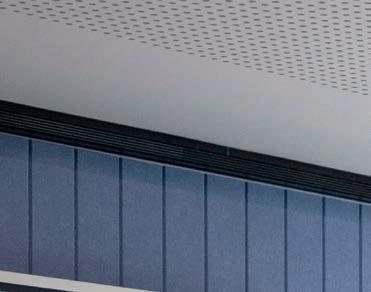
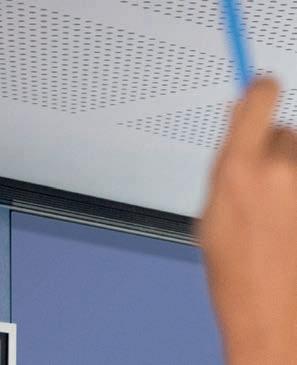
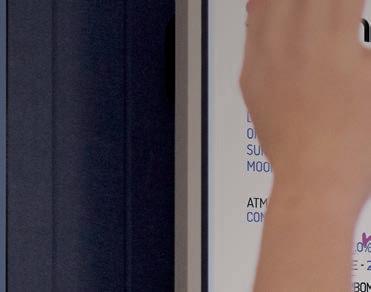







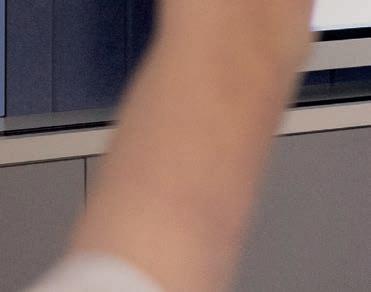
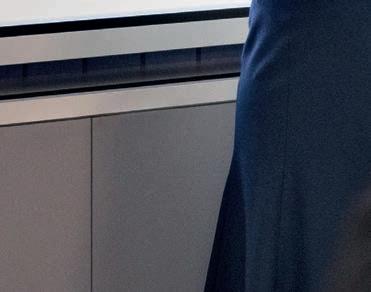
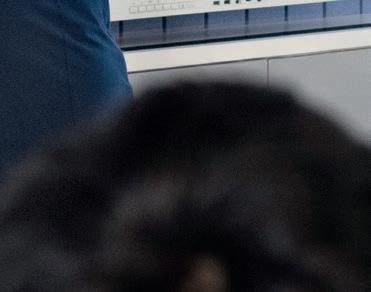







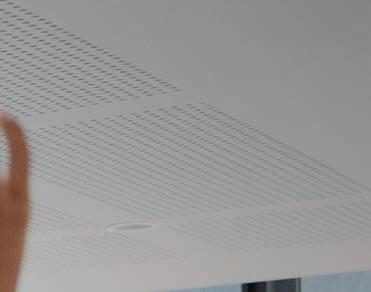
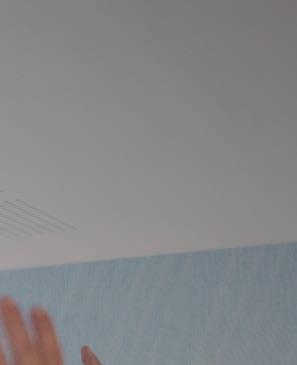
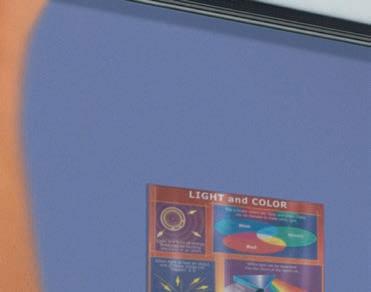



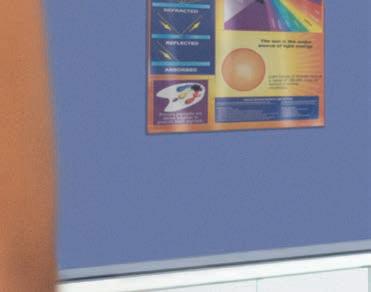
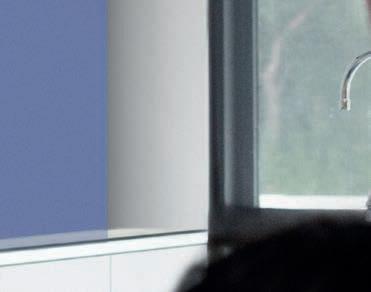



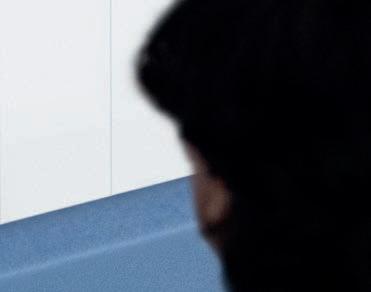



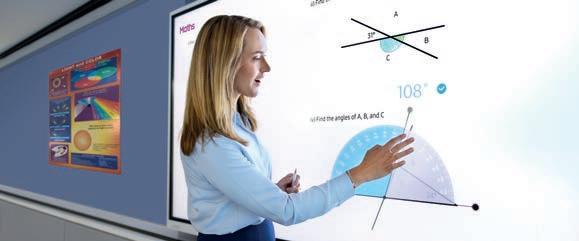
Taking care of the off-field
It’s become well accepted in professional sport that if a player’s off-field affairs are in order, this will translate to an optimal on-field performance – a mind unburdened by distraction, insecurities and uncertainty. This same logic can be applied in the education sector where decisions made outside of the school gate often influence the in-class performance.
This mainly speaks to education policy but also encompasses the self-care regimes of teachers and principals to ensure the best version of themselves front to work each day.
As such, this edition of Education Matters is a microcosm of the many important initiatives occurring beyond the primary school classroom in Australia.
Of significant interest will be Federal Education Minister Mr Jason Clare’s address to the recent 2023 APPA National Conference in Hobart (page 12). While acknowledging there were no quick fixes, his plans to overcome the teacher workforce squeeze and to ensure trainee teachers are industry-ready, were a point of discussion at the conference.
What also worries him is the widening education gap. Notably, there’s an expanding disparity in the reading skills of eight-year-olds from poor families compared to those in wealthy families. There’s also been a drop in students finishing high school. These alarming statistics form the basis of the National School Reform Agreement that will determine a fairer funding model for schools.
Clare also noted the new NAPLAN proficiency levels that have been deliberately lifted. In fact, Australian Curriculum, Assessment and Reporting Authority (ACARA) CEO Mr David de Carvalho provides an analysis on these results (page 50). While the data might not look as pretty as years gone by, he says the new approach is working as intended by clearly identifying areas where the education sector needs to focus its efforts.
AI is another area where Clare and other education policymakers may need to focus their attention in future. Debate is already ensuring about what role it will have in the classroom, but the University of South Australia’s Ms Sam Dawes offers a positive outlook whereby AI personalises the learning experience (page 48). She offers a futuristic glimpse into a Year 7 science class where students use a device loaded with an AI app assessing their proficiency levels, adjusting the content and pace of instruction accordingly.
In other initiatives, we sit down with Ms Peta Jeppesen to hear about the isolation she felt as a school principal struggling with burnout (page 50). Not wanting to burden anyone with her issues, this led to her starting Beyond the Classroom Australia, an oasis for educators to re-energise, work through challenges in their roles and find a renewed sense of inspiration.
The world of education may be imperfect but, as this edition attests to, it’s positive to see progress outside the classroom towards the shared objective: fully engaged classrooms where students thrive.
Happy reading!
Kate Felton Editor – Education Matters kate.felton@primecreative.com.au
www.educationmattersmag.com.au
www.educationmattersmag.com.au/subscribe/
Chief Operating Officer: Christine Clancy christine.clancy@primecreative.com.au


Managing Editor: Myles Hume myles.hume@primecreative.com.au
Editor: Kate Felton kate.felton@primecreative.com.au
Design Production Manager: Michelle Weston
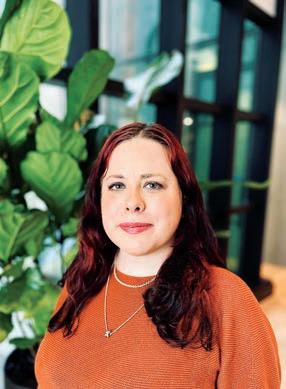
Art Director: Blake Storey
Designer: Michelle Weston

Media Bookings and Advertising: Kylie Nothrop kylie.nothrop@primecreative.com.au 0422 046 299
Client Success Manager: Glenn Delaney
Education Matters is a division of Prime Creative Media Pty. Ltd.
379 Docklands Dr, Docklands, VIC Ph: (+61 3) 9690 8766
Subscriptions
Education Matters is available by subscription from the publisher.
The rights of refusal are reserved by the publisher. Ph: (+61 3) 9690 8766
E: subscriptions@primecreative.com.au
Articles
All articles submitted for publication become the property of the publisher. We reserve the right to adjust any article to conform with the magazine format.
Cover Image
AFLW Schools Ambassadors (from left) Lisa Steane, Sydney Swans, Gabby O’Sullivan, Fremantle Dockers, Lauren Ahrens, Gold Coast SUNS.
Copyright Education Matters is owned by Prime Creative Media Pty. Ltd. and published by John Murphy. All material in Education Matters is copyright and no part may be reproduced or copied in any form or by any means (graphic, electronic, or mechanical including information retrieval systems) without the written permission of the publisher. The Editor welcomes contributions but reserves the right to accept or reject any material. While every effort has been made to ensure the accuracy of information, Prime Creative Media will not accept responsibility for errors or omissions or for any consequenses arising from information published. The opinions of the magazine are not necessarily the opinions of, or endorsed by the publisher unless otherwise stated. All photographs of schools (including students) depicted in feature articles and advertisements throughout this magazine have been supplied to the publisher (and approved) by the contributing school. All material supplied by schools is done so with the understanding that such images will be published in Education Matters and may also appear on the our website: www.edumatters.com.au.
4 education matters primary EDITOR’S NOTE
Education Matters MagazineEducation Matters
LEADING FROM WITHIN: Leadership Development Program for Middle Leaders

For more information call Helen on 0427 219 664 or email: admin@thebrowncollective.com.au
The Brown Collective’s flagship program, ‘Leading from Within’ acknowledges the importance of middle leaders to a school’s overall performance. The vast majority of middle leaders want to remain in these roles.
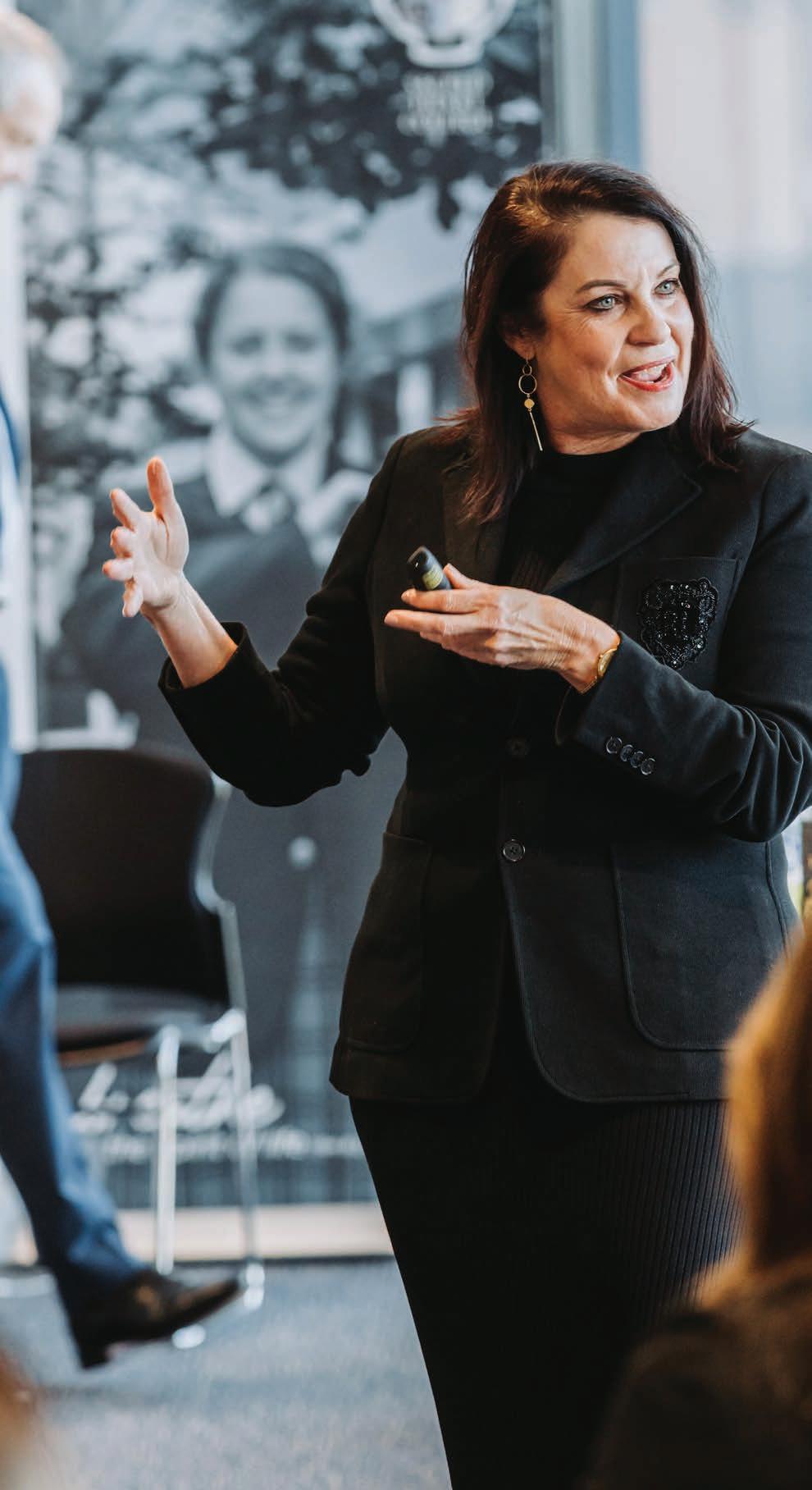
Leading from Within supports and enhances the formation of middle leaders through exploration of key aspects of their leadership such as leading teaching and learning, and leading teams. Every program is customised to ensure contextual relevance to the school, network, region or system that it is being delivered to.
The program is typically conducted over a nine-month period with a minimum of 20 participants. Successful completion of the Leading from Within program enables participants to make application for a 1 unit credit towards a Master’s Degree offered by Australian Catholic University (ACU), Charles Sturt University (CSU) and Broken Bay Institute—The Australian Institute of Theological Education (BBI TAITE).
Amanda Ypinazar, Principal
thebrowncollective.com.au admin@thebrowncollective.com.au
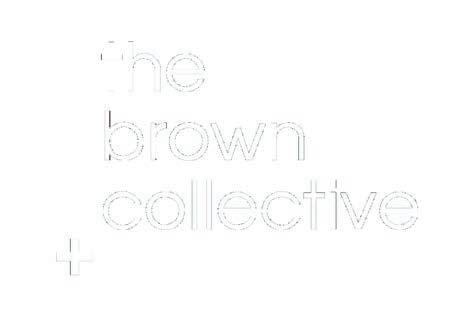
contents
REGULARS
Editor’s note 4

News 8
APPA update 12
At the recent national conference in Hobart, Education Minister Mr Jason Clare discussed workforce shortages, teacher training and his major reform agenda.
Hot topic: School-readiness 14
Is it more beneficial to delay the age children start primary school, or does it even matter?
Principally Speaking 18
Mr Stuart Marquardt has been working hard to restore Lindisfarne Anglican Grammar School to its former glory.
Teacher’s Voice 22
Kogarah High School teacher Philipa Tlaskal dives into the renaissance of chess in primary and secondary schools.
The Last Word 47
- Dr Rebecca Marrone and the very real issue of maths anxiety
- Ms Sam Dawes on personalised education through AI
- ACARA’s Mr David De Carvalho discusses new NAPLAN proficiency levels.
FEATURES
24 A league of their own
AFL Schools offers Australian students a challenging and rewarding in-class and on-field football program.
28 Creating balanced classes
Class Creator’s software has coordinated over four million student placements, saving time for schools.
30 The joy of reading
Rochelle Bor ton on why reading is a skill that opens students’ eyes to new ideas and exciting ways of thinking.
32 Nurturing the website creatives of tomorrow
Grok Academy’s website competition teaches students the principles of HTML, CSS and web design.
34 A new era of learning
How the Samsung Flip Interactive Display is facilitating creating interactive and engaging learning experiences.
36 The freedom to focus
Lenovo digital solutions are eliminating micro-frustrations that deter the attention of teachers and students.
38 A foundation for digital literacy
How JB Hi-Fi Education helped Good Samaritan Catholic College implement an effective digital ecosystem.
40 Dare to be a rockstar
When Ms Peta Jeppesen was overwhelmed as a principal, there were few places to go, so she did something about it.
42 Moral Injury: a stressor for school leaders
Dr Stephen Brown on the causes of ‘moral injury’ and how this can impact educators.
44 Play spaces enrich childhood development
WillPlay creates high-quality playground equipment that is rooted in environmental stewardship.
6 education matters primary
PRIMARY SEPTEMBER - NOVEMBER

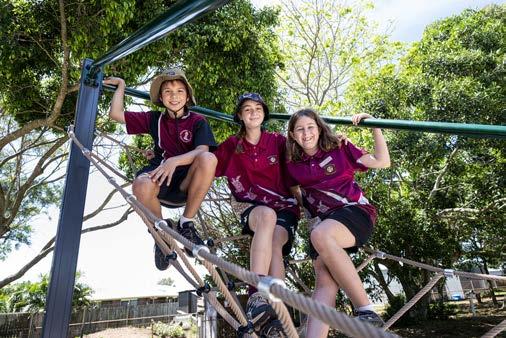



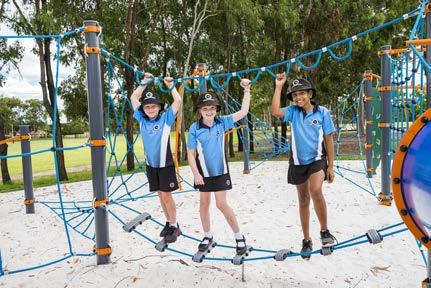
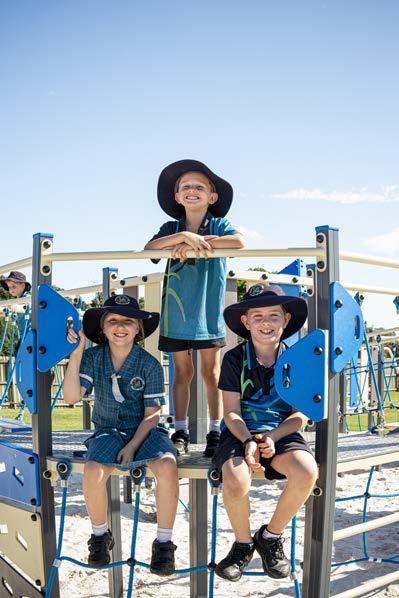

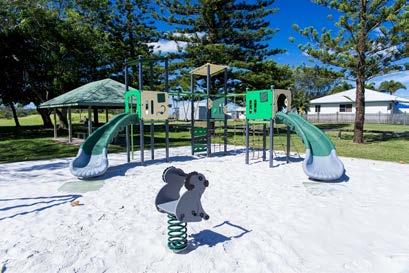



| | Designed by big people, for little treasures. . . www.willplay.com.auP. 1300 132 047info@willplay.com.au NewCatalogue OutNow WI L LP L AY PLAY FITNESS RECREATION
Students look to the cosmos for inspiration in STEM
Distant galaxies, strange new worlds and the mysteries of the cosmos could hold the key to unlocking Australian students’ interest in science, technology, engineering and maths (STEM) subjects, according to experts at Deakin University.
A Deakin study will investigate the use of astronomy and the wonder of the universe to pique middle and high school-age students’ interest in maths and science – subjects too often perceived by them as stale or irrelevant.
Project lead Dr Saeed Salimpour of Deakin’s Research for Educational Impact (REDI) centre said for millennia humans had looked to the night sky for inspiration and an understanding of life’s greatest questions.
His project will explore the use of contemporary astronomical data in classrooms to develop students’ critical thinking, scientific, mathematical and technical skills, which he said could prove crucial to their future careers.
“Using a global network of research-grade, ground-based robotic telescopes and astronomical databases, the aim is to enable and support students to capture images of astronomical objects and process them to reveal the science, beauty and mystery of the cosmos,” Dr Salimpour said.
“Students will be supported to develop interdisciplinary skills to explore
the nature of light, the engineering and operation of telescopes, problem solving and troubleshooting, and using computers to process the images. The lessons will also provide context for engaging class discussions on the awe and wonder of the cosmos.”
Survey will shape the future of education in Australia
Nearly 25,000 teachers, parents, guardians and students have taken part in a national survey to help shape the future of school education.
The survey was released in May 2023, as part of the Expert Panel Review into the next National School Reform Agreement.

The survey responses are being considered by the Expert Panel review into the next National School Reform Agreement, chaired by Dr Lisa O’Brien AM.
“The Expert Panel is seeking the views of teachers, parents and students through the survey to help inform the development of recommendations for our report, due to all Australian Education Ministers at the end of October,” said Dr Lisa O’Brien.
In addition to the survey, the Expert panel has been consulting with stakeholders and visiting schools across the country to review “what is working, what isn’t working, and what more is required to improve student learning and wellbeing outcomes.”
“I’d like to thank the teachers, parents and students who took part in this survey which will help shape a better and fairer education system,” said Minister for Education Jason Clare.
“The results underscore just how important our teachers are and the incredible job they are doing in our schools, and further highlights the practical reforms that could make our education system a lot better and a lot fairer.”
Key feedback from the survey includes:
• 87 percent of parents and 78 percent of students said teachers give students the encouragement they needed.
• 82 percent of students say their school makes them feel welcome.
• 74 percent of teachers said reducing workload would help lift student outcomes.
• 35 percent of parents and 40 percent of students are concerned about classroom disruption and its impact on learning.
• 55 percent of parents said access to small group and individual tutoring would support their child.
• 77 percent of parents and 59 percent of teachers support improved access to allied health professionals, including occupational therapists and speech pathologists.

In total, 13,684 teachers, 8,494 parents/guardians and 2,790 students took part in the survey.
“We are committed to working with State and Territory Governments to get every school on a path to 100 per cent of its fair funding level,” said Minister Clare.
“That funding is important, but so is what it’s spent on. This survey will help identify the practical things that are needed to help students who fall behind catch up and help more students finish high school,” he concluded.
The Expert Panel will provide a final report to Education Ministers by 31 October 2023 advising on the reforms that should be tied to funding in the next National School Reform Agreement. EM
NATIONAL EDUCATION NEWS 8 education matters primary
EM
The project is funded as part of an Alfred Deakin Postdoctoral Research Fellowship.
Dare to be a Rockstar
Teacher.
Beyond the Classroom’s Dare To Be a Rockstar Teacher program cultivates a sense of contentment in the workplace, built on four pillars –Rest, Play, Create, and Innovate.


Support Optimal Well-Being


Develop A Healthy Sense of Confidence

Facilitated by former school principal Peta Jeppesen over terms in 2024, the program includes:
• x3 90-min planning sessions with the school’s well-being officer/s
• x8 15-min interactive group sessions conducted via Zoom with teachers
• x4 60-min support sessions with the well-being officer/s (one a month)
• x1 60-min in-person session for the entire group to celebrate progress and achievements.
• x1 30-min follow up session with the well-being officer/s
All-inclusive, at $6,050 including GST.
Participants will leave the program equipped to confidently navigate challenges and maintain a consistent presence in their professional lives.
For more info scan the QR code or visit: beyondtheclassroomaustralia.com.au/dareto-be-a-rockstar-teacher

Achieve Your Goals
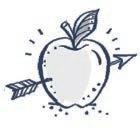
Call to recognise achievements beyond a single score

employers, higher education and training providers, admissions centres, and government bodies representing every jurisdiction in Australia.
“In the 21st century, it is possible to recognise achievement in far more sophisticated ways than exams, tests and scores alone … to reflect the breadth and depth of what young people know and can do,” the statement said.
The We Are More event was organised by Learning Creates Australia, the South Australian Department of Education, the South Australia Certificate of Education (SACE) Board, National Indigenous Youth Education Coalition and Melbourne Assessment (the University of Melbourne’s Graduate School of Education).
Learning Creates Australia Co-Chair Mr Anthony Mackay said bold discussions about the Australian school system were vital to a successful future for young people.
“It is clear that we need a new definition of learning success, with new ways to measure and report on what young people know and can do,” Mackay said.
education reform that values every young person’s contributions, attributes, skills and interests. According to the We Are More commitment statement, the alliance pledges to “make sure every young person has proof of their learning success beyond a single mark or score”.
The statement was developed at the inaugural We Are More event, held in Adelaide on 15 August and was co-designed by an alliance of more than 170 participants including schools, students, First Nations communities, academics,
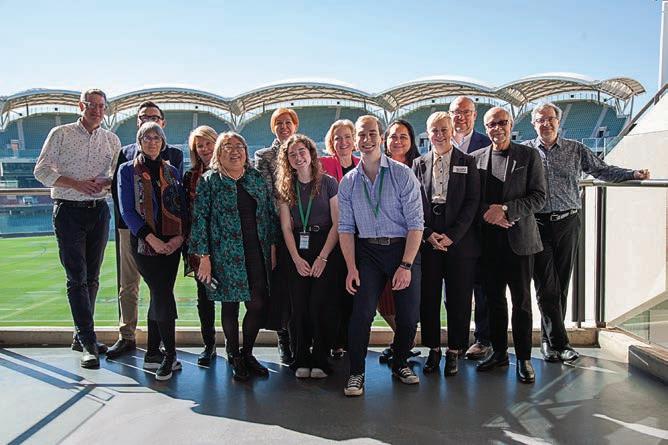
“We need a commitment to collaboration, where partners in the learning system come together with the educator profession and young people as cocreators of a future education system – one that is fit for purpose. We are not only advocating that this should happen – we are demonstrating that it is happening.”
The alliance is working collaboratively over the next year on a plan for an education and learning system that is fit for purpose, designed for young people’s future and based on new partnerships and power shifts. EM
Narragunnawali Awards 2023 shortlist announced

Australian schools and early learning services with a passion for reconciliation in education have been selected as finalists for the Narragunnawali Awards 2023.
Held every two years since 2017, the awards celebrate outstanding commitments to reconciliation in education. A part of Reconciliation Australia, the Narragunnawali program supports all schools and early learning services in Australia to champion reconciliation and foster a high level of knowledge and pride in Aboriginal and Torres Strait Islander histories, cultures, and contributions.
Finalist were selected by a judging panel of eminent First Nations educationalists: Sharon Davis, Geraldine Atkinson, and Joe Sambono. The panel recently met to assess the shortlisted applications and applauded the level of commitment to reconciliation in education from schools and services across the country. The judges were impressed by the finalists’ use of local Aboriginal languages, their embedding of reconciliation and Aboriginal and Torres Strait Islander histories and cultures into the curriculum and their strong relationships with local Elders and communities.
Chair of the panel Ms Sharon Davis said they appreciated the finalists’ efforts to address anti-racism in their settings and to build strong and respectful relationships with their local Aboriginal and Torres Strait Islander communities.
“Schools and early learning services are increasingly becoming places that are welcoming for First Nations students and families as education gets serious about reconciliation.
“The impact of the initiatives demonstrated by these finalists cannot be overestimated on the broader Australian society. These schools and services present a brighter future for our students and the country,” Ms Davis said. “The Narragunnawali program is a catalyst for change; for a better and fairer Australia.”
Finalists in the Schools category:
• Winterfold Primary School – Noongar Country, Beaconsfiled, WA
• Kwoorabup Nature School – Noongar Country, Denmark, WA
• Kellyville Public School – Darug Country, Kellyville, NSW
Finalists in the Early Learning category:
• Stirling District Kindergar ten – Kaurna Country, Stirling, SA

• Wyong Preschool Kindergar ten – Darkinjung Country, Wyong, NSW
• Little Beacons Learning Centre – Wurundjeri and Bunurong-Boon Wurrung Country, Pakenham, VIC
The judges also commended Lismore High School, Melbourne Indigenous Transition School, Hawthorndene Primary School, Goodstart Shailer Park, KindaMindi Early Learning Centre, MacGregor Outside School and Hours Care. EM
NATIONAL EDUCATION NEWS 10 education matters primary
More than 170 participants attended the We Are More event in Adelaide on 15 August.
A more focused Start experience


Smarter technology at every


With a 360° any-position hinge, the Lenovo 13w Yoga is everything you need for your busy on-the-go lifestyle. It's compact, elegant and packs a 13.3” OGM multi-touch screen display to present wider range of colors and improved contrast in visuals. Supporting Rapid Charge, it lasts up to 14.8 hours a day.


techtoday.lenovo.com/education
Education minister reveals his blueprint
Federal Education Minister Mr Jason Clare has only been in the top job a little over a year, but isn’t shying away from the sector’s biggest challenges, if a recent address at the Australian Principals Association (APPA) National Conference is anything to go by. His plan to address workforce shortages and teacher training, through to the things that keep him up at night, were discussed in a live broadcast to delegates at Hobart’s Hotel Grand Chancellor in Tasmania.
The event, which took place 30 July to 2 August 2023, was also an opportunity for the sector to become familiar with new APPA President, Ms Angela Falkenberg, who most recently served as President of the South Australian Primary Principals Association. Taking over from Mr Malcom Elliott, she comes to the role with a wealth of education experience and is an advocate for resilience, optimism and self-care, describing herself as a “rational optimist”.
In his wide-ranging speech, Clare tackled workforce pressures upfront. He reaffirmed the importance of teachers by pointing out that children don’t recall much from their childhood, but often remember “that special teacher”.
“That says something doesn’t it? About 20 years ago New York City ran a recruitment campaign. They wanted more people to become a teacher. The message was really simple: ‘You remember your firstgrade teacher’s name. Who will remember yours?’. Simple and powerful. Powerful because it’s true,” he said.
With this in mind, he said the profession can expect to see a new campaign later in 2023 that has been designed by teachers and will tell the story of educators in every state and territory, and the students whose lives they changed.

“It’s not the solution to the teacher shortage crisis but it’s important to remind us as a country about how important you are and hopefully encourage a few people thinking of being a lawyer or a banker to dream bigger and better.”
Clare also provided an update on the rollout of the National Teacher Workforce Action Plan that includes $40,000 scholarships to attract people to the profession.
“One of the things that principals told me last year when we were
primary APPA // 2023 NATIONAL CONFERENCE
FEDERAL MINISTER FOR EDUCATION MR JASON CLARE ADDRESSED THE 2023 APPA NATIONAL CONFERENCE IN HOBART TO PROVIDE AN UPDATE ON PLANS TO TACKLE WORKFORCE SHORTAGES, TEACHER TRAINING
Federal Minister for Education Mr Jason Clare presented via video link from Canberra where parliament was sitting on the day of the conference.
going through the draft plan was that these scholarships were bonded,” he said. “There was a quid pro quo. You got the money, but you had to make a commitment too. A commitment to teach for a number of years and that will happen here too.”
According to Clare, a major part of the plan is improving teacher training at university, so that it adequately prepared teachers for the real-life classroom. If implemented well, he hopes the measures will help turn the tide against current figures showing only 50 percent of those who start a teaching degree finish it, while 20 percent of those that finish end up leaving the profession in the first three years.
“Just imagine if we could shift that dial? If most students completed, if fewer left after a few years in the classroom, if they felt better prepared? That’s what these reforms are about.”
Clare recently met with state and territory education ministers who agreed to some major changes to what students are taught at university and how we can improve the practical experience they get.
reading and and maths, manage classroom behaviour and work with children with complex needs.
• A Quality Assurance Board will ensure all universities improve prac with national guidelines and better coordination, as well as professional recognition of the teachers who mentor and support initial teacher education (ITE) students

• Making it easier for people to take up teaching mid-career.
Clare also discussed what worries him, notably the education gap in Australia. He highlighted that 15 years ago, the gap in reading skills of eight-yearolds from poor families compared to those from wealthy families was about a year, but this was now two. Often, the gap only gets bigger – and now the country is seeing a drop in the percentage of students finishing high school, mainly among poor kids and in public schools.

These trends are the impetus for the National School Reform Agreement.
“As a federal government we have made a commitment to work with the states and territories to get every school on a path to full and fair funding,” he said.
“What’s also important is what it’s spent on, and the difference that it makes. This next agreement is a real chance to tackle some of the biggest and toughest challenges you face every day. To make sure we invest this money in the sorts of things that will really help the children I just spoke about to catch up and keep up and finish school.
“That’s what the review into a Better and Fairer Education System led by Dr Lisa O’Brien is all about. It will recommend what we tie funding to in the next National Schools Reform Agreement. Soon the national NAPLAN results come out and I expect they will show there are more students who need additional support. We have done this deliberately, we have raised the bar on purpose to identify the students who need additional support. The job of the next National Schools Reform Agreement is to help provide that support. To build a better education system and a fairer one that funds the things that will help these students to catch up, keep up and finish school.”
In his closing remarks, Clare thanked former APPA President Mr Elliott and congratulated Ms Falkenberg on taking the reins.
“Malcolm has been an endless source of great advice in my first year in the job and I am really looking forward to working with you Angela,” he concluded. EM
13 education matters primary
The conference included a strong line up of education leaders.
Australian Explorer James Castrission was a keynote speaker, most famous for the longest polar expedition without assistance, and for paddling 3318km across the Tasman Sea.
Does age determine a child’s readiness for school?
When is the right time to start school? It’s a question parents have been asking for generations. Too soon and they risk being left behind, too late and they could miss out on valuable experiences in the classroom. Making the right choice can feel impossible and recent data has only reignited debate, revealing many families are choosing to delay the start of school until kids hit six.
A recent article in The Age reported enrolments for children who turn six by July in the year they begin kindergarten – the first year of primary school in New South Wales – increased to 19,019 last year, up from just 13,209 kids in 2012. They now make up 28 percent of enrolments compared to just 19 percent a decade ago. This is a significant leap – one that could have huge implications for the decisions of not just other parents, but educators and policy makers as the makeup
of the classroom shifts.
In New South Wales, children born between January and July can start school aged four and a half to five years or choose to delay a year and start aged five and a half to six years. But children born August to December almost always start school in the year after their fifth birthday.
In a landmark 2019 study, the University of New South Wales (UNSW) released research examining the link between child development and school starting age, finding a strong link between age and developmental skill in the first year of school. Researchers studied more than 100,000 students starting kindergarten in NSW and found one in four families delay school entry until the year their child turns six.

Analysis of the huge dataset was led by Dr Mark Hanly at UNSW Medicine’s Centre for Big Data Research in Health and published
in UNSW Newsroom. Dr Hanly found children born from August to December were ideal to study how age is linked to development due to their lack of choice in when to start school, compared to their January to July born peers.
“When we compared their developmental data there was a clear trend: outcomes improved with each additional month of age,” Dr Hanly says.
“Month-on-month these differences are quite small, there’s not a big gap between August-born children and September-born children, for example. However, accumulated over a full year, these differences add up and unsurprisingly there is quite a large development gap between four and a half year olds and six year-olds.
“What the data really show us is that, on average, children who start school in the year they turn six are more likely to have developed
HOT TOPIC // SCHOOL-READINESS 14 education matters primary
NEW DATA SHOWS MORE PARENTS IN AUSTRALIA’S MOST POPULOUS STATE ARE CHOOSING TO DELAY WHEN THEIR CHILDREN START SCHOOL. EDUCATION MATTERS EXAMINES THE LATEST RESEARCH AROUND THIS AGE-OLD DEBATE.
the skills and competencies needed to thrive in a formal learning environment, compared with their younger peers who start school in the year they turn five,” he tells UNSW Newsroom


The study also found significant geographical and social variation in the families who opted to delay.
“Boys, younger children, and children from relatively advantaged families and neighbourhoods – particularly in Sydney – were more likely to delay,” UNSW and the Australian National University study director Dr Kathleen Falster says.
“This might be because parents and teachers believe that boys and younger children are often less school-ready – but delaying school entry can come at an additional cost for families, especially if the alternative is expensive childcare.”
Dependant on the area, rates of delay ranged from eight percent to 54 percent across 198 areas in NSW, with lower levels of delay recorded in disadvantaged urban areas.
Early childhood education expert and coauthor on the study, Australian National University Associate Professor Ben Edwards says the results of the study had the potential to impact policies on children’s readiness for school, as well as classroom composition.
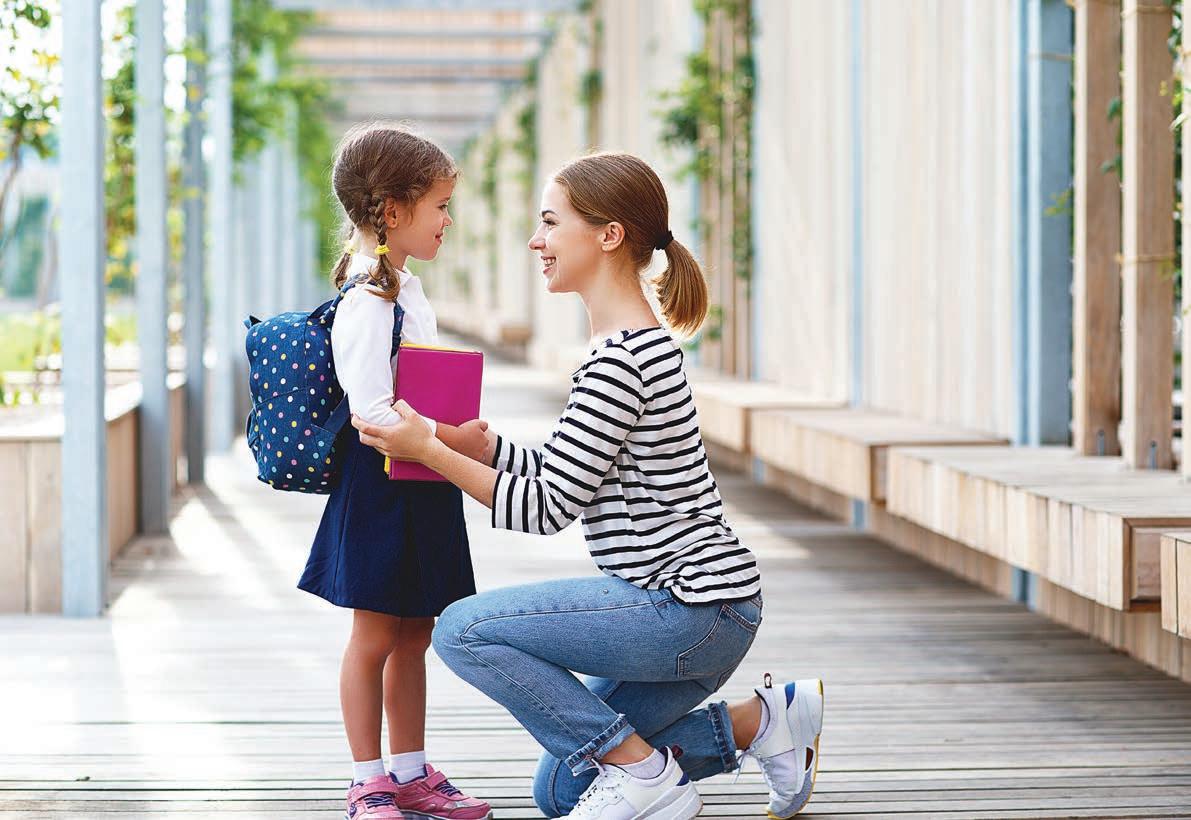
“One policy option is to raise the enrolment age to remove the most developmentally vulnerable children from the schooling environment – which would also narrow the gap between the youngest and oldest children in a classroom,” Edwards says.
LONG TERM IMPACTS
While these results underline that kids who start school later may be better adjusted for the first year, it falls short of drawing conclusions on the longterm effects of starting school either earlier or later.
Research published in 2006 in the journal Educational Evaluation and Policy Analysis concluded that there are no long-term disadvantages, academically or socially, to delaying school. Though it conceded little was known at the time about the impact of school age entry into high school and beyond.

Another study from 2009 published by the
American Psychological Association (APA) suggested markedly older or younger students in a cohort were initially found to be disadvantaged in the classroom, but that any variance in performance attributed to starting school later were negligible by high school.
The study also reported that students who start earlier often have more motivation to ‘catch up’ with their cohort and may be more engaged over the long-term than their older peers. However, researchers from UNSW say a more solid evidence base is needed on the long-term effects of a delayed school start.
“We need more longitudinal research on the potential for initial age-related differences to impact later school outcomes – while some earlier studies have suggested academic gaps closed between younger and older children after first grade, the long-term implications just aren’t clear yet,” Dr Hanly said.
15 education matters primary
More NSW parents are delaying the age their children start school.
Getting ready for primary school education.nsw.gov.au NSW Department of Education
The NSW Department of Education has developed a guide to help families get their children ready for primary school.
NAPLAN PERFORMANCE
An article published in the Conversation by researchers examining the link between delayed school entry and scholastic achievement compared the NAPLAN reading and numeracy results of children who were held back with those who were sent to school when first eligible.
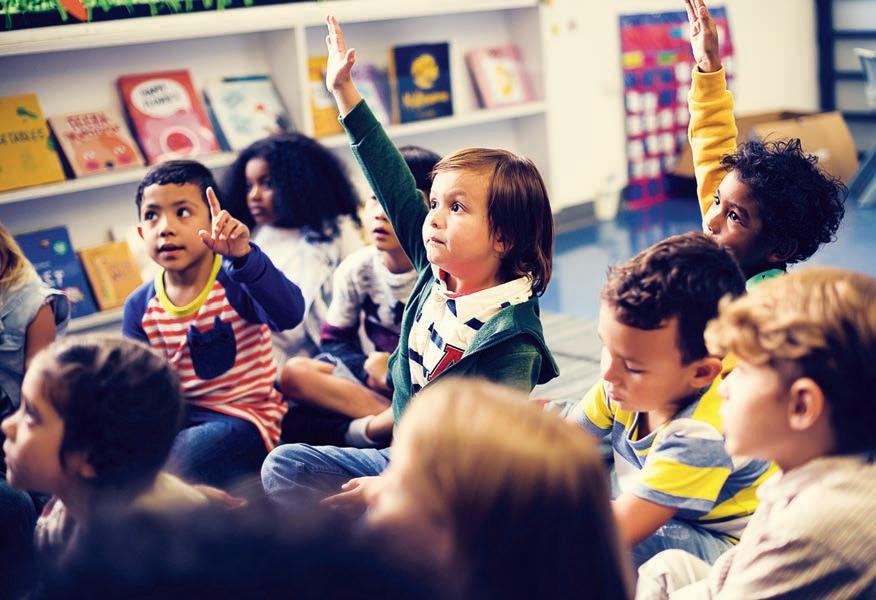
The study compared the scores of 2823 children in the reading and numeracy sections of NAPLAN tests for Years 3, 5, 7 and 9. Researchers found students in Year 3 received slightly higher results in NAPLAN if they were held back, compared to their peers who were not. But this slight advantage reduced at Years 5 and 7. By year nine students who were held back did no better on NAPLAN tests than those sent when first eligible.
The researchers found that even differences in age of 12 months or more appeared to make little difference to NAPLAN achievement later in school. The results also indicated individual differences in focus and attention ability may matter more for NAPLAN achievement than a delayed start to schooling.
However, the study did not take into account the social or behavioural skills of children, which is undoubtedly an important factor in the decision for parents deciding to delay the start of school or not. Despite this, the results, again, suggested delayed school entry does not have a large or lasting influence on academic achievement. However, the fact is the choice to delay the start to school is on the rise amongst families in NSW.
Speaking to The Age, mother of four from Sydney’s south Steph Cochrane said she will be waiting another year to send her daughter, Florence, to school.
“I just think there is never a con in holding them back,” she said.
While Cochrane said her child was academically and emotionally mature, she said that parents only regretted sending their children to school earlier, not later.
“Kids who have good emotional wellbeing and are happy, they’re the ones who are going to learn,” she said.
MEASURING A SUCCESSFUL TRANSITION TO SCHOOL
According to the Australian Bureau of Statistics approximately 100,000 students started primary school in NSW in 2020, including 70,610 children
at government schools. The NSW Government website underlines that for these children, it is their transition to school that counts in the long run. However, although there is a significant amount of literature on this topic, there remains a lack of clarity surrounding how to measure a successful transition to school. Indeed, a range of factors may need to be considered, but are beyond the control of parents.
The NSW Government 2021 ‘Transition to school’ literature review pointed to COVID-19 as one such consideration. Though the review concedes there is limited research on the disruption the pandemic has had to children’s development, initial emerging research suggests the negative impacts should not be underestimated.
Other considerations mentioned in the report include children’s emotional, social and developmental skills, the support available to them once they enter the classroom and the continued monitoring of their progress.
The report said school readiness is now widely accepted to be a multi-dimensional concept that incorporates not only a child’s readiness for the learning environment, but also the learning environment’s readiness for the child. School readiness also includes the capacity of families, communities and services to provide the necessary opportunities, conditions and support to optimise children’s learning and development.
With so much to consider it is no wonder
parents are choosing to err on the side of caution when it comes to choosing a start date for their children. Though there are many conflicting views on the matter, ultimately the decision is made with the individual child in mind. It is clear more and more families are choosing to delay, only time will tell if it makes a difference. EM
Key points
• Around 100,000 students started primary school in NSW in 2020
• 70,610 of those were at NSW government schools
• Children who turn six by July in the year they begin kindergarten increased to 19,019 in 2022, up from just 13,209 2012 They now make up 28 percent of enrolments compared to 19 percent 10 years ago
• On average, children who start school the year they turn six are more likely to have developed the skills and competencies to thrive in a formal learning environment
• Students in Year 3 received slightly higher NAPLAN results if held back. But this slight advantage reduced at Years 5 and 7. By Year 9 students held back did no better on NAPLAN tests
• One study showed any variance in performance attributed to starting school later were negligible by high school age.

HOT TOPIC // SCHOOL-READINESS 16 education matters primary
A UNSW study shows, on average, children who start school the year they turn six are more likely to thrive in a formal learning environment.


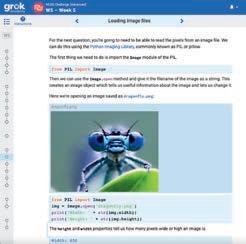






FREE for all Australian schools Your home for Digital Technologies education Grok Academy offers: Curriculum-aligned online courses with automarking and student progress reporting. Engaging and easy to use for students. Printable classroom resources, unplugged activities, lesson plans and teacher notes for students in Years F–12. PLUS MORE! Helping you teach digital technologies with ease licensed by grokacademy.org help: help@grokacademy.org ��������������������������������� ���������������������������������������������������������������������������������������������������������� ��������������������������������������������������������������������������������������������������������� �������������������������������������������������������������������������������� – �������������������������� – ��������������������� –������������������������������������������������������������������������������������������������� ������������������������������������������������������������������������������������������������������������� ����������������������������������������������������������������������������������������������������� ����������������������������������������������� ��������������������������������������������������� ����������������������������������������������� ��������������������������������������������������������������� ��������������������������������������������������������������������������������� Lola needs a profile picture for her online game. Game settings personal Change ? Your profile picture Lola Done Lola used her recent school photo for her profile on her online game. Created by Grok Academy Limited www.grokacademy.org Your profile picture Lola Done Lola used an avatar for her profile on her online game. B A Front Lots of friend requests keep popping up. What should Harry do? + Friend request settings Who can send you friend requests? Private Harry went to talk to his mum and together they turned the game setting to private. ADD Newguy111: Add me as your friend! + ADD DELETE + Friend requests Harry added all his new friends! He had not met them in person but liked having so many friends to play his online game. B A Supported by: Digital Detective Cards (Years F-2) grok academy
Every child matters, every day
WHEN MR STUART MARQUARDT TOOK OVER AS PRINCIPAL OF LINDISFARNE ANGLICAN GRAMMAR SCHOOL IN 2016, HE TOOK IT UPON HIMSELF TO RESTORE THE SCHOOL TO ITS FORMER GLORY. HE OFFERS A GLIMPSE INTO THE LEADERSHIP STYLE HE HAS ADOPTED TO PROVIDE A CLEAR DIRECTION FOR THE SCHOOL.

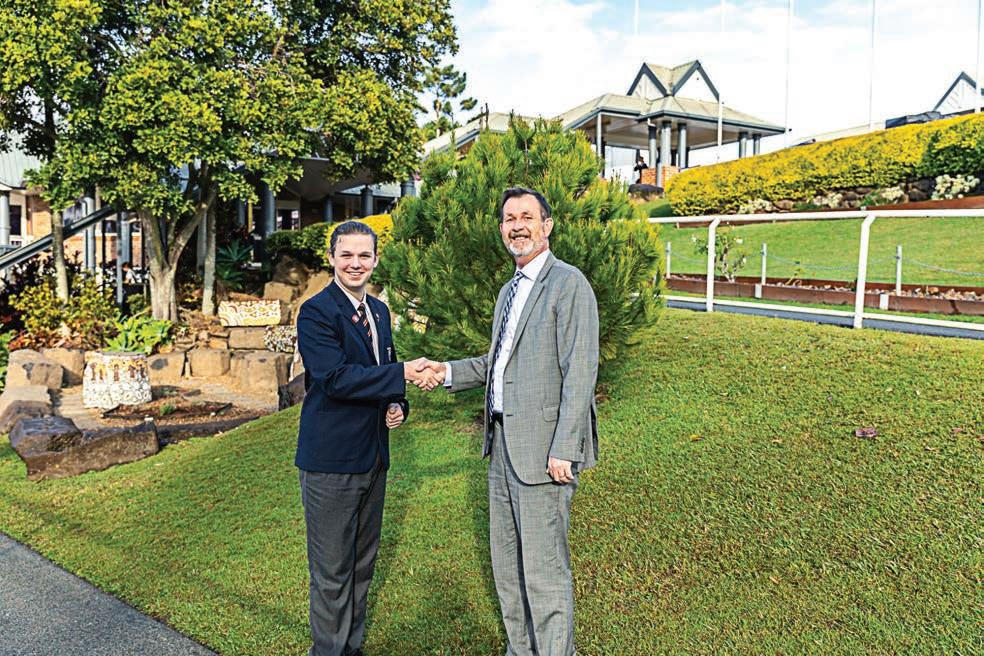
CAN YOU PROVIDE AN OVERVIEW OF LINDISFARNE ANGLICAN GRAMMAR SCHOOL?
Lindisfarne Anglican Grammar School is an independent, Anglican co-educational grammar school that serves the southern Gold Coast, Tweed Coast, and northern NSW. Families choose to attend Lindisfarne because of its high standards and student outcomes. Parents entrust their children to our community because of the high quality educational program complemented by a pastoral care program that nurtures personal, social, and academic wellbeing supported by the School’s values of compassion, wisdom, and respect.
4, Middle School for Years 5 to 8, and the Senior School for Years 9 to 12. Our structured academic program has a focus on students’ individual strengths and abilities, supported by a comprehensive co-curricular program that includes sports, studies in performing arts, and recreational activities. This combination of academic and co-curricular activities, supported by pastoral care, helps our students develop as confident, independent, and wellrounded individuals.
WHAT IS THE HISTORY OF THE SCHOOL AND ITS PHILOSOPHY TO GUIDE STAFF AND STUDENTS?
Lindisfarne began as a small Anglican Primary
of the original campus at Sunshine Avenue, Tweed Heads, were progressively extended until secondary schooling was introduced in 1995. In 1996, the Secondary School relocated to its permanent site in Mahers Lane, Terranora
18 education matters primary PRINCIPALLY SPEAKING // LINDISFARNE ANGLICAN GRAMMAR SCHOOL
Principal Marquardt congratulates Premier’s ANZAC Memorial Scholarship recipient James Warner. Lindisfarne School Captain induction.
WHAT ARE YOU CAREER HIGHLIGHTS AND WHAT ATTRACTED YOU TO THE ROLE OF PRINCIPAL AT LINDISFARNE?
My work over 11 years with Education Queensland played a pivotal role in shaping the educational leader I am today. Working on exchange with the Windsor Board of Education in Canada, early on also opened my eyes to learning around the world. Being a Foundation Head of Subschool at Sunshine Coast Grammar provided the opportunity to be part of building a school from the ground up. These skills helped when I became Headmaster of Great Southern Grammar School in WA, growing the boarding and day school communities. What attracted me to Lindisfarne was its untapped potential. We’ve built on this and the school is going from strength-to-strength.

HOW DOES LINDISFARNE TAKE STEPS TO FOSTER A SENSE OF COMMUNITY ON THE SCHOOL CAMPUS?
We pride ourselves on being accessible, engaged, and visible – something I’ve learned over the years is most students and a large number of parents are not particularly interested in the quality of your strategic, curriculum or operational plans. They want to see staff at the top of the stairs or the front gate in the morning or afternoon. They want to talk with staff formally and informally.
Our staff attend various school events where we mix and mingle and help pack up too; it is important to set an example of servant leadership. Our staff are quick to join school productions and jump on the microphone at school events.

WHAT ARE THE SCHOOL’S MAIN PRIORITIES FOR THE 2023 SCHOOL YEAR?
Being intentional about our Anglican identity and ethos sets an excellent platform for our work and enhances our culture. We will continue to enhance the use of data to inform teaching and learning and to build capacity in students. We are pursuing an aspirational master plan and infrastructure projects at both campuses to enhance the facilities. We worked for over 12 months to develop a meaningful Reconciliation Action Plan (RAP) and to engage in authentic ways with First Nations people and in closing the gap initiatives. We are building a culture of mission and service in our students, advocating that ‘to whom much
19 education matters primary
Lindisfarne Anglican Grammar School Principal Mr Stuart Marquardt.
good decisions and good choices ‘when no one is watching’ helps build a reflective culture of personal responsibility.
HOW DO THE VISUAL AND PERFORMING ARTS PLAY A ROLE IN THE CURRICULUM AT LINDISFARNE?

A rich visual and performing arts culture permeates across the school. We have an outstanding staff, hard working and talented students, and a very supportive school community. We live in a region where the arts are central to daily life and are the threads woven into the very fabric of the community.
There is a strong performance culture, and music, drama, dance, and visual arts are at the forefront of whole school gatherings and daily school life. Students grow enormously from creative exploration, building the capacity to go above and beyond and gaining confidence that is transferable to other areas of learning and life.

The students are creative problem solvers who bring joy into the life of our community through a deep commitment to their artistic endeavours.

I’m proud a distributed model of leadership exists in our school. I have visibility over all aspects of our school’s operations but have trust and delegated authority within an amazing executive
team. I knew early on I would need to have a capable and high performing executive team structure. I quickly implemented a sub-school leadership structure to ensure that roles and responsibilities were clear and my colleagues could have legitimate leadership autonomy for aspects of the school they were charged with. Important messages I’m reinforcing with staff very child matters, every day. At the heart of this is to care deeply for each of our
alued in all that we do, whether it be in the classroom, beyond the classroom, across the curriculum, or beyond the school. At the heart of this is the belief that all young people can learn and all learning is important. very staff member has the capacity to make an enormous difference in students’ lives and
o do remarkable things, you must first give them remarkable things to do. This is about stretching ourselves to provide a rich and responsive curriculum, a dynamic and contemporary co-curricular and service learning experience in order to stretch students and build capacity.
• At the heart of education is the education of the heart. In settings such as Lindisfarne, it’s essential to teach gratitude, ensuring our
20 education matters primary PRINCIPALLY SPEAKING // LINDISFARNE ANGLICAN GRAMMAR SCHOOL
Principal Marquardt and The Reverend Constantine Osuchukwu present Kindy with their bibles.
Principal Marquardt reads to Junior School students as part of the National Simultaneous Storytime.
focus is on something other than what we want to get, but on what we have to give.
• Technology is a standard learning tool. It does not replace good teaching, but contributes to great teaching and learning, and access to a knowledge base unimaginable to previous generations. Let’s use it well.
HOW HAS YOUR TIME AT LINDISFARNE INFLUENCED YOUR LEADERSHIP STYLE?
As a large and dynamic K-12 learning community, it is important that staff have the opportunity to share their expertise and practice. Weekly staff briefings are held, and staff meet regularly throughout the term in school, subschool, faculty, year level, academic and pastoral teams. This allows staff to share best practices, discuss current contemporary issues, develop plans for the future, discuss students or areas of the school needing further support and development, and reflect on current achievements.
Staff, of course, are encouraged to share information as well through professional dialogue and collegial support. It is important for staff
wellbeing that they are given an opportunity for times to gather and share socially in support of one another through staff morning teas, social club functions, and in times of celebration such as weddings, the birth of a child, or a significant career achievement and in times of grief and loss.
I’ve worked hard with the staff to develop a ‘culture of yes’. For so many years, the school had, for some reason, developed a culture of ‘No’. Staff ideas were rejected, and staff input was almost non-existent. We needed an environment where input from staff would not only be sought but valued, supported, and, as much as possible, implemented. Our achievements in giving staff voice and agency have been extraordinary. Comprehensive co-curricular programs have been implemented, and new curriculum offerings in many areas, including Performing Arts, Technical and Applied Studies, and Science, for example been introduced. Also, our one-to-one device program developed from this culture, as did our community garden. I encourage staff to write for the newsletter, speak at conferences and forums, and share their practices with and beyond the school.
So many conversations with staff result in new ideas; it’s exciting when staff start the conversation with “I’ve been thinking about…”
WHAT LESSONS COULD PRINCIPALS OR ASPIRING EDUCATION LEADERS LEARN FROM YOUR EXPERIENCE?

When I began at Lindisfarne in 2016, it was evident the school needed to change, particularly as neighbouring schools continued to grow and flourish in supporting students in the region while Lindisfarne’s offering had narrowed and enrolments were in decline. I immediately set about implementing a significant reform agenda across the entire school. In broad terms, the school lacked clear and consistent strategic intent across the key elements of school performance outlined in Master’s School Improvement Tool (2016). Using this framework, I commenced with a large-scale ‘warts and all’ review. All stakeholders were invited to contribute to a cultural audit, with over 400 respondents, which I have used to lay the foundation for many of the reforms over the past seven years.
The outcomes from this review drove our first strategic intent and the strategies that arose from each of our strategic pillars - Achievement, Relationships, Communication, Initiatives, and Reputation. The values of Wisdom, Compassion, and Respect and the cultural drivers of Leadership, Standards, and Collaboration came from the feedback.
The school operates with a clear vision and agreed and aligned values.
My advice to educators aspiring leadership would be to involve themselves deeply in the life of the school, to continue to study and learn, build a network beyond the school, and a servant leadership mindset to the school.
ANY FURTHER HIGHLIGHTS WORTH MENTIONING?
In recent months, I have found my attention being drawn to the year 2032. This will be an exciting year in the history of Australia as the 2032 Olympic Games are held in Brisbane. The questions I find myself asking are: What will Lindisfarne Anglican Grammar School be like in 2032, and how might we leverage and build on an Olympic Games being held within 100km of our school? EM
21 education matters primary
Lindisfarne Year 12 Graduation.
Gen Z checking into chess
At a time when school students are criticised for their Tik Tok video length attention spans, the 1400-year-old game of chess has never been more popular in Australian schools.
Srijan (15), Chess Captain at Kogarah High School (KHS) in Sydney’s south-west, puts the surge of interest amongst his peers down to a combination of lock-down boredom, the hit Netflix series (2020) The Queen’s Gambit, and the former longtime reigning world champion Magnus Carlsen’s accusations of his opponents cheating on bathroom visits with cameras hidden in their shoes, which riveted the media.
With the World Chess Championship just wrapping up in Azerbaijan, a record 11.4 million hours of games were viewed and a first ever Chinese World Champion, 30-year-old Ding Liren, was crowned. One billion games were played on chess.com in February this year –about 2.8 times more than what was played at the same time last year.
In Srijan’s experience, social media influencers are the greatest reason why chess
is a new-found passion for school students, starting at primary school and flowing into their secondary education. Influencers like Gotham Chess, who produces hilarious instructive videos, and Hikaru Nakamura – a Grand Master at age 15 with his audacious gameplay, memes
SECONDARY SCHOOLS
and reacts – make the chess world more of a magnet for young people.
Mr Brett Tindall, owner of the Sydney Academy of Chess, credits migrant families who “want their kids to be smart” with the upswing of interest. “Previously, there was a huge drop off in participation from keen primary school students to high schoolers but now that has levelled out and students are continuing through to high school and beyond.”
Toula Kohilas, Librarian at KHS, has bought 10 new boards this year and says the library is taken over every lunch time with students playing chess. Srijan is keen to play other schools through tournaments run by the Sydney Academy of Chess and he’s to make chess matches faster and more competitive at his school using timers.

Speed of play is key in making the games more attractive to young people. Adrenalinfuelled ‘Blitz’ chess games are 10 minutes or less and ‘Bullet’ game players have three minutes each for a 40 move game.
Never has chess been more accessible

22 education matters primary TEACHER’S VOICE // PHILIPA TLASKAL
KOGARAH HIGH SCHOOL ENGLISH TEACHER PHILIPA TLASKAL DISCUSSES THE RENAISSANCE OF THE ANCIENT GAME OF CHESS THAT IS TAKING HOLD IN PRIMARY AND
ACROSS AUSTRALIA.
Philipa Tlaskal, Kogarah High School.
to be played on phones on public transport or late night in bed. The addition of a computer commentator like Gotham who can tell a good or bad move and can point out mistakes, makes the once slow game as engaging as a footy match.
KHS Chess Club Coordinator Nick Grose is excited about the explosion of interest in chess since about midway through last year. “I think one of the pleasing things to see is that students, who you wouldn’t typically expect, have deep chess acumen and ability,” he says.
“Also, our students from the Intensive English Centre (IEC – especially our new Ukranian arrivals) are able to transcend language barriers by playing chess. If KHS kids can concentrate on chess, then they can have success elsewhere.”
Science host, former Triple J presenter and self-confessed chess tragic, Mr Adam Spencer, says on the Sammy J podcast on ABC Radio: “The beauty of chess is that there is always someone better than you, and that could be a nine year old girl in India.”
Former chess nerds are even returning to the game. Queenslander Mr Ronan Neville, 21, has been playing since he was 8-years-old. He gave up in high school and recently had a
random game with a mate, then downloaded the app on his phone.
“My style is fast-paced and risky and I was surprised at how thrilling the games are,” he says.
In this era of AI, humans still play differently to a computer and former kids’ chess coach and now lawyer Edwin Alexander, 34, thinks that it is the close interaction with a family member, and the one-on-one time of playing live chess, that is its real attraction. Sure, he likes testing out different ideas by playing against the computer but says what he most remembers about playing chess with his busy barrister mother was the closeness they shared.
“Having her focused attention for an hour at a time is what I treasured,” he reminisces.
Laura is a 13-year-old Colombian student at KHS learning English. She played chess with her grandfather before migrating to Australia six months ago and now is a regular at the library chess sessions and teaches other girls to play.
Meanwhile, in China, Ju Wenjun (32) is the reigning female chess champion, despite 95% of professional chess players being men. According to Edwin, this is because female players “are more into collaboration, rather than competition”.
In a chess lesson he kindly gave me, Edwin
reduces the pieces on the board to kings and queens. “You don’t give a novel to a toddler, you give them a picture book,” he says, and proceeds to teach me how to checkmate with my royal couple.
As a recent father, he is keen for more chess teachers in schools but thinks that there are not enough who play themselves.

“You can teach chess at any age; for primary students it teaches them spatial awareness and addition and you can just start with pawn vs pawn and see who makes the most blunders. I get them to master two to three pieces before moving on to whole board games.”

The game continues to evolve. Hybrid forms of the game such as ‘chess boxing’ have taken off in Melbourne where Blitz games of chess are interspersed with rounds of boxing, though younger participants hit punching bags, not each other.
While chess.com instantly matches you with a player anywhere around the world, identified by their flag on the app, nothing beats sitting around with your mates in the school library, be they from Ukraine, Lebanon, India or Macedonia, and battling it out on the 64-squares grid that offers endless off-screen possibilities for young people. EM
23 education matters primary
Speed of play is key in making the games more attractive to young people.
Kogarah High School
Chess Captain Srijan, 15.
A league of their own
There are very few things that unite Australians quite like a game of Aussie rules football. The anticipation that precedes an important match is unrivalled in the history of Australian sport. The excitement and energy of game day is palpable as the stadium fills with fervent fans and teams take their positions. From that first quiet moment when the crowd holds their breathe and the whistle blows, what follows is a symphony of cheers, chanting, and pure emotion that drives the spirit of the game and elevates players to local hero status.
For young people, the thrill of the game of football can be enjoyed by attending matches, choosing a favourite team, wearing team colours and participating in the family and community aspect of Australia’s football culture. Children can find an idol and a mentor in their favourite sports heroes, experiencing their successes and failures alongside them, and learning about resilience and perseverance. Naturally, when a child establishes a loyalty and connection to their favourite team and most iconic sports heroes, this can lead to an interest in learning the rules of the game, and the best way for children to get an understanding of the rules is by getting out on the field and actually playing it. Nothing encourages children to aspire to more in life and dream big quite like learning the game through hands on experience, reinforced by professional coaching from those who have lived and breathed the game – and that is where AFL Schools comes in.
THE LEGACY OF AFL SCHOOLS
The Australian Football League (AFL) is the premier professional Australian Rules football league. Established in 1897 in Melbourne, the AFL has grown thanks to decades of athletic excellence and stewardship to become the
largest and most popular football league in Australia. The AFL showcases the best in Australian Rules football, combining athleticism, skill, and competitiveness, making it one of Australia’s most beloved institutions in the world of sports. Apart from its on-field action, the AFL also plays a significant role in shaping and influencing Australian society. The league actively promotes social inclusion and diversity, advocating for gender equality and Indigenous reconciliation. It also supports a variety of charitable initiatives, making positive contributions to the community at large.
As an integral part of the Australian Football League, AFL Schools represents the longstanding legacy and tradition of Australian footy united with a commitment to fostering excellence in both academic and athletic abilities in students of the game. By offering schools a comprehensive and holistic football curriculum that includes teacher training, inclass learning modules, and on-field coaching, AFL Schools strives to cultivate a life-long interest and passion in students for the game of football.
AFL SCHOOLS – AFLW AMBASSADORS PROGRAM

Students of the game are encouraged to be intellectually curious, participate in in-class and on-field learning exercises and engage in critical thinking as they learn about strategies for gameplay. To supplement these lessons, AFL Schools offers a host of materials and resources to help guide teachers when delivering the curriculum, which is aided by on-site support from AFL School Ambassadors who play professionally in the league. AFL Schools Ambassadors enjoy a balanced career as a professional football player and teaching as part of the AFL Schools program, visiting schools
across Australia to equip teachers and educators with the tools required to coach football.
“It’s a privilege to be able to marry my two passions – AFL and education,” says the Sydney Swan’s Ms Lisa Steane. “Being an AFL Schools Ambassador takes a lot of time management and flexibility from both employers. I tackle this by making sure that I prioritise my time while I’m at school and am planned and prepped in advanced, which then allows me to be fully present while I’m at footy.”
Ms Steane notes that her time teaching has been rewarding both personally and professionally. “Teamwork, leadership and communication are three key skills that I’ve developed in both my teaching and football careers,” she says. “Being able to develop them in a football environment has strengthened my confidence as an educator, particularly, when I transferred them from teaching at the primary level to high school curriculum.”
For Gold Cost SUNS’ player and AFL Excellence Coordinator at Miami State High School, Ms Lauren Ahrens, becoming an AFL Schools Ambassador has been about seizing those teachable moments and watching her students grow their potential as they progress through the program.
“I love integrating what I’ve learnt as an athlete and a teacher to give students the best possible experience to reach their goals and strive for more at school,” Ms Ahrens says. “With our female numbers in the AFL program increasing I’m really enjoying seeing the girls’ growth. We have limited time that I can spend one-on-one with each of the girls, however, that has been enough time to establish trust and build a relationship with them. It makes me happy to see how enthusiastic they are to learn and improve. They all really put their heads
24 education matters primary CURRICULUM // AFL SCHOOLS
AFL SCHOOLS OFFERS AUSTRALIAN STUDENTS AN EQUAL PARTS CHALLENGING AND REWARDING IN-CLASS AND ON-FIELD FOOTBALL PROGRAM.
Membership Program
The AFL Schools Membership program is a free program that provides over 5,000 teachers Australia wide with exclusive access to:
• AFL Schools National Grants Program
• Priority access to teacher resources
• AFL & AFLW player appearances

• Termly AFL Schools ‘On the Mark’ newsletter
• Opportunity to be nominated for its Teacher of the Year awards
• Ticketing offers
School rewards for high engagement with AFL programs and competitions
• Membership to the AFL Schools - Teacher Network Facebook Group Schools can join the AFL’s growing teaching community today for free by visitng: www.play.afl/schools/membership/ schools-membership-form/
25 education matters primary
Angela Foley, AFLW Schools Ambassador and Port Adelaide FC player.
Photo credit: Matt Sampson
down and want to get the most out of everything I’m teaching them.”
Port Adelaide player Ms Angela Foley has been teaching at Seymour College and grown the school’s football teams from two to six including more than 100 girls in the program. “Seeing the joy on students’ faces when they learn to master a new skill or even just give something new a go –that is what I love about teaching,” Ms Foley says.
“Women’s sport is really stamping its feet at the moment in Australia. It is exciting to be a part of it both as an athlete but also to have the opportunity to nurture, guide and inspire students at the school level as well. For girls to see that the sky is the limit for females in sport now and they can make a real career out of it, not just as players, but also in the media, administration and on coaching pathways as well.”
A healthy generation of students is a happy one, which is why AFL Schools places an emphasis on encouraging physical fitness in young students to maintain a healthy, balanced lifestyle that will prepare them for success on future educational and career pathways. Football encourages cooperation and team spirit among children which is aided by the development of communication skills and leadership qualities The game also promotes healthy competition and teaches children to respect rules and their opponents.
Ms Gabby O’Sullivan from the Fremantle Football Club says becoming an AFLW Schools Ambassador has meant the world to her in terms of providing a platform to educate others about the importance of a healthy lifestyle and the benefits of the game, as well as bringing joy and fulfilment to her life.
“Teaching is a great outlet for me away from footy. It allows me to have multiple focuses and connect with people from all different backgrounds. Apart from the ‘street cred’ I have with my students as a footballer, I have been able to inspire students who are keen on pursuing sport as a career on what it takes to be a professional athlete,” says Ms O’Sullivan. “The involvement and engagement with footy has seen massive change in recent years, particularly, following the establishment of AFLW in 2017. I have seen a huge increase in specifically young girls picking up a footy as well as more conversation around female sport.”
The success of students is measured not only by their academic achievements but also by their personal growth and character development.
The AFL Schools program offers an equal parts rigorous, challenging and fun football curriculum that covers a broad range of subjects and welcomes students from diverse backgrounds, with different skillsets and unique individual needs to learn about the game.
Hawthorn Football Club’s Ms Kaitlyn Ashmore was “absolutely stoked”, to get involved in the AFL Ambassadors program, allowing her two loves of football and teaching to collide.

“Footy promotes healthy active living and it also builds confidence. Students prone to being more shy benefit a lot from the AFL Schools programs because it puts them into a situation where they have to step outside of their comfort zones,” says Ms Ashmore. “As a teacher, it’s allowed me to grow my leadership skills through managing different situations with students and helped me to communicate more effectively both on and off-field.”
EVERYONE MATTERS: AN INCLUSIVE SCHOOL FOOTBALL PROGRAM
AFL Schools strives to create a supportive and inclusive environment and foster a sense of belonging and community for students. Football is an inclusive, community-based sport that welcomes everyone to learn about leading a healthy and active lifestyle, build teamwork skills, and work on the principles of discipline, endurance and core strength abilities that are part of playing the game.
Everyone Matters is a teaching and learning program developed by the AFL for primary aged Australian students from Foundation to Year 6 and includes both classroom learning modules and on-field gameplay and activities that have been designed to encourage an appreciation for Australia’s diversity. The Curriculum-aligned modules educate students on the ways that the AFL celebrates diversity; from Indigenous games and
26 education matters primary CURRICULUM // AFL SCHOOLS
Kaitlyn Ashmore, AFLW Schools Ambassador and Hawthorn FC player.
multiculturalism to AFL Blind and AFL Wheelchair; as well as fostering an understanding of inclusion, acceptance, individualism and cultural diversity.
This unique format of these lessons includes two in-class sessions to showcase how the AFL celebrates diversity and can be the vehicle to become more inclusive. This is followed by two practical on-field sessions which allow students to begin applying their learning in a real-world context. The lessons are structured to reflect ‘best practice’ for teacher delivery; including effective teaching strategies, engaging activities and interactive videos to engage students. These lessons can be delivered as stand-alone lessons or taught in succession as follows:
• Stage One: Indigenous games (FoundationYear 2)
• Stage Two: Inclusion/International (Years 3-4)
• Stage Three: Inclusion/Disability (Years 5-6) These free modules can be accessed via: www. play.afl/schools/teacher-resources/off-field-inclass/everyone-matters/
PROMOTING PHYSICAL FITNESS, HEALTH AND WELLBEING
Physical education is of utmost importance for children as it plays a crucial role in their overall development and well-being. Engaging in physical activities at a young age not only helps improve their physical health but also enhances
their cognitive, social, and emotional skills. With the increasing prevalence of sedentary lifestyles among children, physical education provides them with an opportunity to engage in regular physical activity and combat the risk of developing various health issues associated with weight and childhood obesity. Regular physical activity promotes a positive sense of emotional well-being. Playing football can serve as an outlet for stress, anxiety, and pent-up emotions, resulting in better mental health. Regular physical activity releases endorphins, which uplift mood and reduce symptoms of depression and anxiety. It also provides children with a sense of accomplishment, self-discipline, and resilience. Furthermore, physical education contributes significantly to the cognitive development of children, by improving brain function, memory, and concentration, enhancing academic performance. By participating in the AFL Schools curriculum, children will acquire invaluable problem-solving and decision-making capabilities, contributing to an overall improved cognitive functioning. By promoting healthy habits and informed choices, AFL Schools aims to instil a lifelong commitment to physical fitness, health and wellness in young people. By nurturing the intellectual, physical, and personal growth of students, schools can create a strong foundation for academic excellence. EM
Grants to support the delivery of AFL in your school
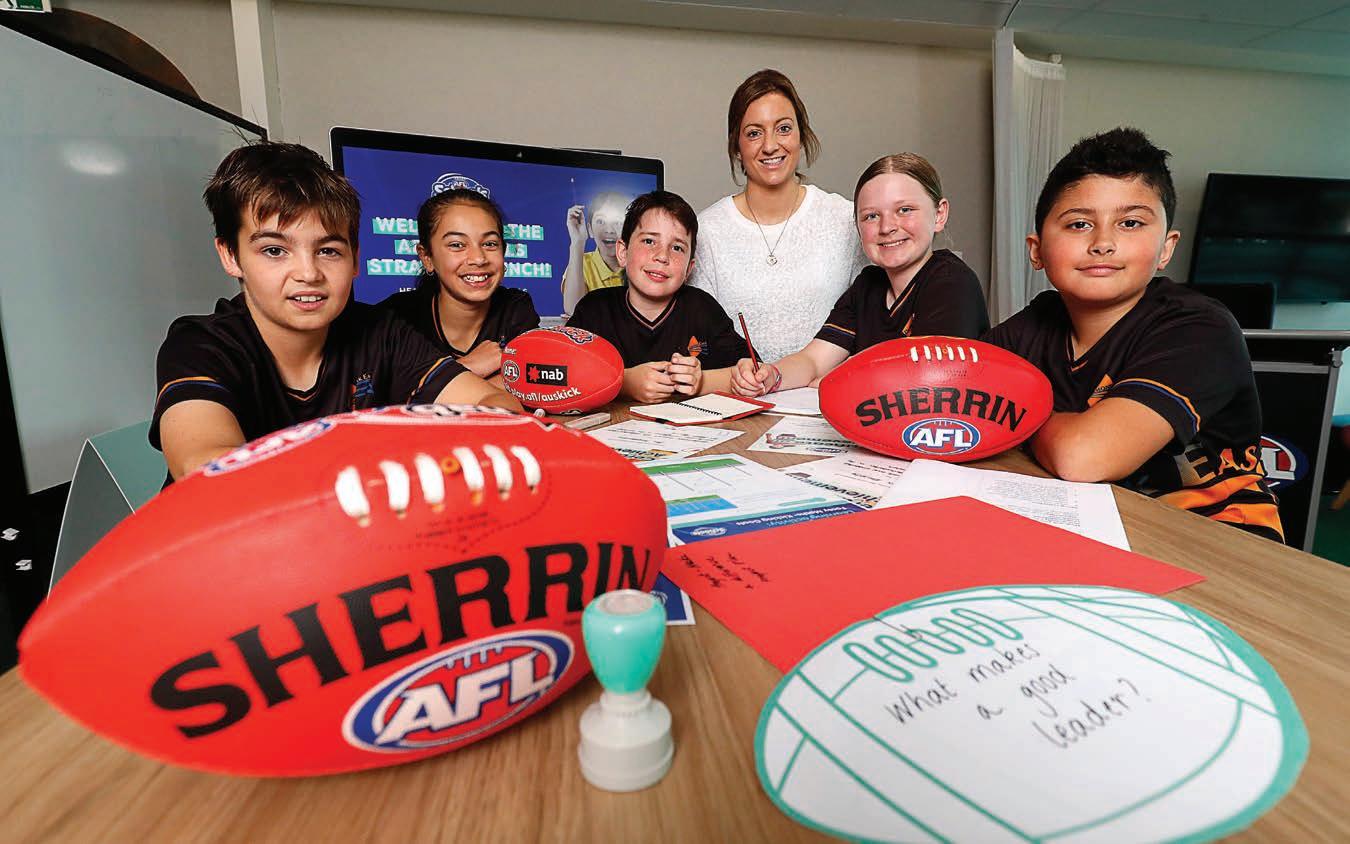
AFL Schools is proud to have dispersed over $100,000 worth of grant funding into schools around Australia so far in 2023. The program has been established to:
• Empower and equip schools to run quality AFL programs
• Help provide a fair and equitable opportunity for all schools in Australia to participate in AFL schools programs and competitions
• Remove existing barriers that may prevent schools from being involved in AFL schools programs and competitions
Schools can apply for grants within specified time periods across the following five streams:
1. CRT Cover: Full day ($450) and half day ($250) CRT relief grants available to support teachers to attend an AFL Professional Learning session or school competition/gala day.
2. Guernsey/Jumper subsidy: $500 subsidy available to help cover the cost of a new set of guernseys/jumpers for school teams.
3. Event Attendance support: $300, per team, per competition to support school teams participating in AFL competitions and gala days
4. Goal post padding subsidy: $500 to help cover the cost of a new set of goal post pads for schools with existing goal posts
5. AFL starter equipment pack: Base level AFL equipment pack for both Primary and Secondary schools
To learn more and apply for a grant, visit: www. play.afl/schools/grants/
27
Stephanie Chiocci, of the Magpies AFLW team, with Year 5 and 6 students from Diamond Creek East Primary School.
Empowering educators to create balanced classes
For many educators, building class lists is the foundation that every school year is built on. Making great classes is one of the most complex processes in a school, with so many data points, requirements, requests, and restrictions – it can quickly turn into a nightmare if not managed well.
In 2014, an innovative Melbourne-based teaching couple who understood firsthand how complex using placement cards, sticky notes and colour-coded spreadsheets was for building classes, decided enough was enough – there had to be a better way! This led to the development of the Class Creator software. Fast forward nearly a decade, and today Class Creator has coordinated over four million student placements, saving schools thousands of hours of planning time.
Class Creator empowers educators with all the tools they need to make the best classes for their students, teachers and

school community.The brilliant thing about using Class Creator is that creating balanced classes no longer needs to be a painstaking, time consuming task at the end of the school year. Class Creator takes the hassle out of making classes by ensuring all the data is organised and displayed clearly, providing educators with all the tools they need to make great class lists.
Through Class Creator, student data is organised and readily accessible at an educator’s fingertips. With the click of a button, educators can edit classes whilst receiving feedback in real-time, add or remove students at any stage and importantly, save all student history in one place. Class Creator has been designed to be super user-friendly, so it doesn’t require staff meetings for training. If educators can use an Excel spreadsheet or fill in a Google Form, they will find Class Creator a breeze.
Westley states his top tip for making great classes is to start planning early – don’t leave it until November! Educators can record comments on student behaviour, academic progress and friendships throughout the year, so no vital information will be omitted from consideration when class lists are formed.
The average teacher can save nearly two hours each year by using Class Creator over traditional manual methods, equating to on average over 52 man-hours per school. This leaves educators with more time to do what they do best – educate the next generation. EM
Interested to learn more? Register now via www.classcreator.io/livedemo for a complimentary live demo hosted by Joel Westley, General Manager of Class Creator on 12 October 2023 at 12:30pm AEDT to learn how to take the hassle out of making your 2024 classes.
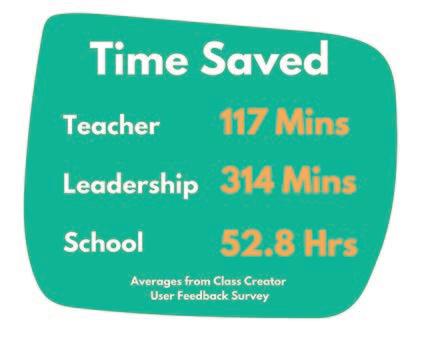
28 education matters primary CURRICULUM // CLASS CREATOR
DESIGNED, DEVELOPED AND SUPPORTED BY EDUCATORS, CLASS CREATOR UNDERSTANDS EACH SCHOOL IS UNIQUE. THAT’S WHY ITS SOFTWARE IS FLEXIBLE TO CATER TO THE SPECIFIC NEEDS OF EVERY SCHOOL.
Time saved among teachers, leadership and schools using Class Creator.
Class Creator empowers educators with all the tools they need to make the best classes for their students, teachers and school community.
Make great classes and save time!
Creating balanced classes has never been so easy!
Class Creator empowers educators with all the tools they need to make the best classes for their students, teachers and school community. Designed, developed and supported by educators, Class Creator understands that every school is unique, that’s why our software is so exible. Now with offices and support in Australia and the United States, schools around the globe trust Class Creator to take the hassle out of making classes.
4,000,000+ Student Placements 100,000+ Educators 250,000+ Classes Created
20,000,000+ Student Data Points
Make Better Classes
Class Creator streamlines your existing processes, allowing you to save time and make better classes.
Balanced Classes Created Instantly
Drag and Drop Editing
Easy Excel Import/Export
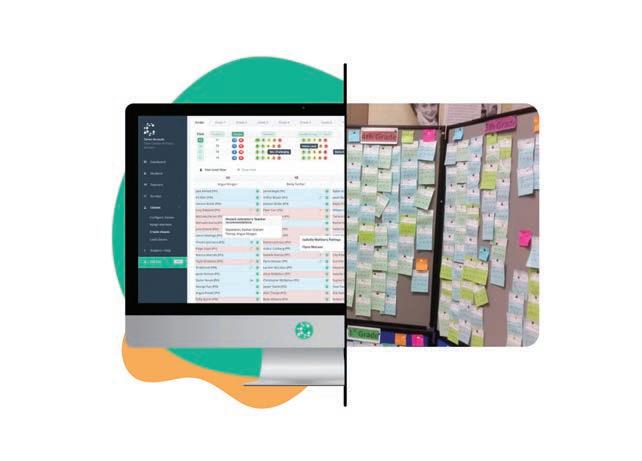
Online Teacher Surveys
Placement Alerts (No more mistakes)
Student History Saved
Traffic Light Colour Coded Year Level Overview
Class Creator in 3 Minutes
Class Quality 100%
Parent Requests Teacher Judgement History Behaviour
Special Needs EAL/ESL Race & Ethnicity Acadamics Separations StudentTeacher Friendships
Pairings
Scan the
to see
QR Code
how Class Creator works!
Visit https://www.classcreator.io/edumatters to register your interest for a 20% discount. *T&C’s apply.
The joy of reading
Reading is a skill that opens your eyes to new ideas and exciting ways of thinking. It could be argued that reading is the most important skill that a child can and should learn. To think that there was a time in our history that reading was not taught and books were a tool of exclusion, and that reading was a privilege not a right. Books carry history, illuminate scientific fact, and create the space for imagination. The advent of e-books, illustrated novels, comics and magazines are firmly entrenched in popular culture.
Each stage of the industrial revolution can be traced in books. The social, cultural, and political events that have shaped our communities can be read, and between each page are the human stories that stir our emotions. Every generation can lay claim to a famous writer, a poet or simply a collection of letters written from one to another. Books are celebrated in our culture as they are in others.
Australian bush poets and authors such as Henry Lawson and Banjo Patterson put words to paper, creating a rich note to our history. Miles Franklin, Oodgeroo Noonuccal, and Dorothea Mackellar have crafted the words that convey powerful imagery of our country. There are not many country towns that are not described or referenced in Australian writing.
The magic that Mem Fox weaved around possums continues to spin around classrooms and libraries alike. Harry Potter and his magical friends, the Cat in the Hat and Jetty Jumping are favourites. Books can be the treasure in which your child finds a smile, chases wonder and, all at once, becomes engaged with learning.
Reading creates the opportunities and challenges children face as they grow. Fiction books carry the colour, fun and characters that children can identify with as they begin to understand themselves. Textbooks might
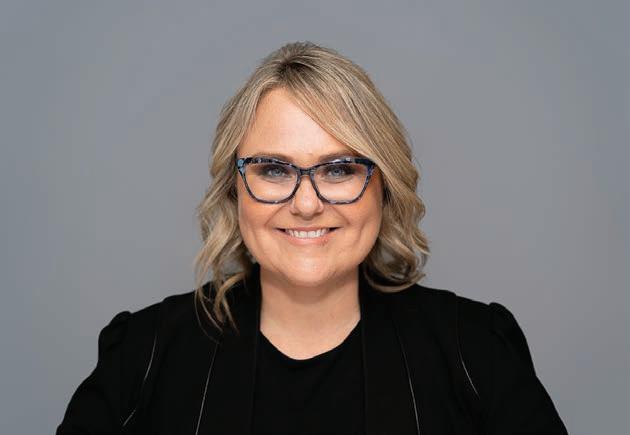
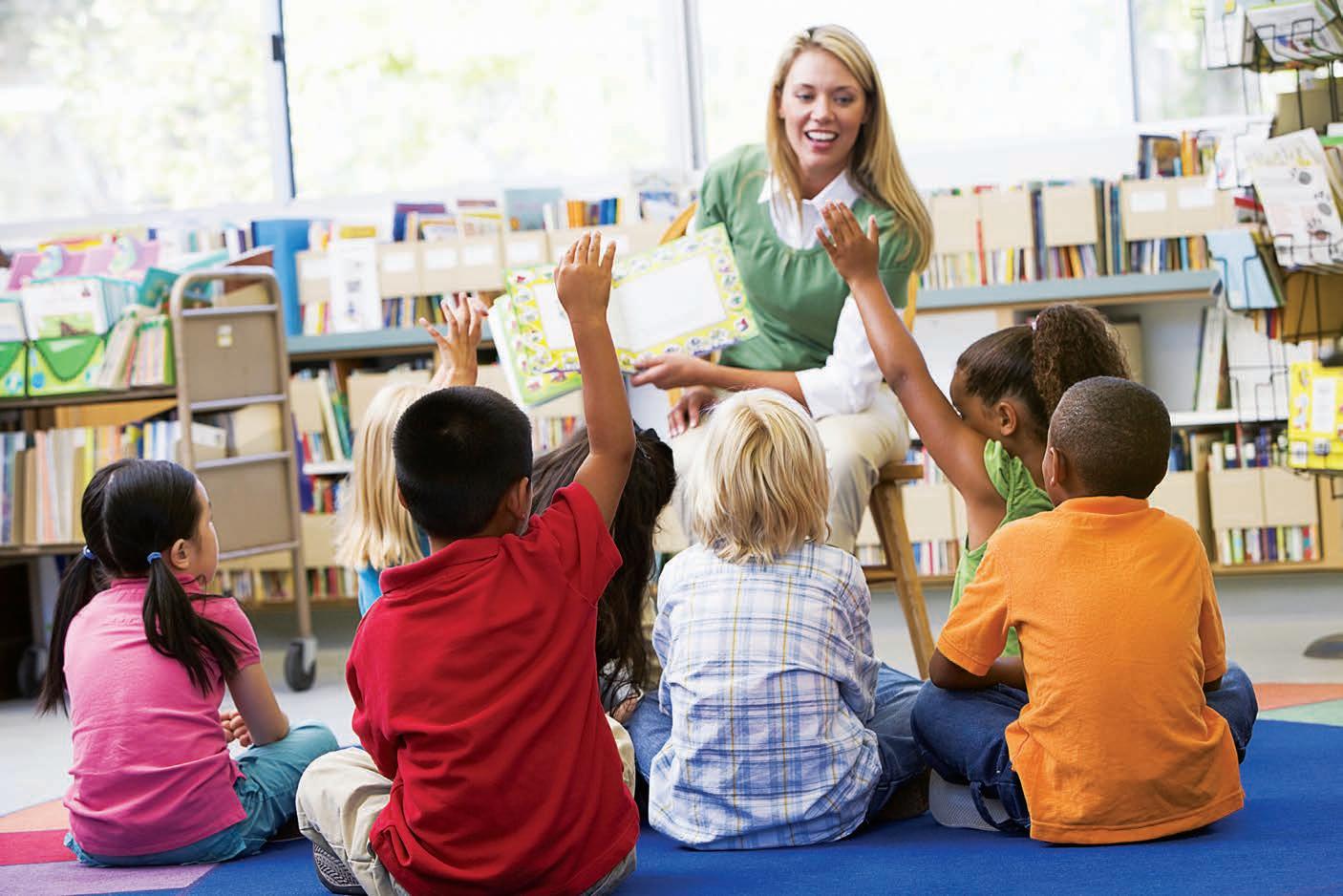
30 education matters primary EXPERT CONTRIBUTOR // ROCHELLE BORTON
Rochelle Borton is the Founder and Managing Director of EduInfluencers, which is an organisation that provides professional development programs, workshops, coaching and strategic consulting for educators, teams, schools and school leaders.
ROCHELLE BORTON EXPLORES HOW BOOKS CAN TRANSPORT YOUNG READERS TO NEW WORLDS, IGNITE THEIR IMAGINATION, AND FOSTER A LIFELONG LOVE FOR READING.
A skilled teacher can draw younger students into colourful pages of picture books, images dancing and text-forming bubbles to engage learning.
seem to be less adventurous, but for the children who love numbers or have the desire to learn about science, books that explain the ‘how to’ and the ‘why?’ open the doors to learning. Parents and teachers share the experiences of children learning to read and that child growing into a creative thinker.


There is a direct correlation between the level of academic achievement and reading ability. Children develop their sense of agency though reading. Kucirkova (2022) described children’s motivation to read being shaped by their experience of reading for pleasure, and how this influences lifelong attitudes toward learning. Digital books and all manner of interactive texts can overwhelm a reader, highlighting the important
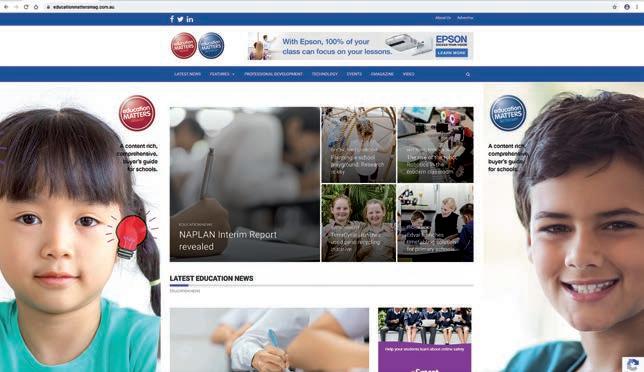
role that books still have. Books don’t need batteries, nor recharging!
There are many physical descriptions of books; the smell of worn pages, the turned over top edge of the page when a bookmark was not around. Picture books, short stories, poetry, and plays can take a mundane day and sprinkle it with wonder and delight. There is little doubt that
For further information, contact: Kylie
reading is more than an escape, books create meaning and understanding. Reading is instructive and engages children in learning.
‘Read, Grow, Inspire’ was this year’s theme for Book Week. The Children’s Book Council of Australia has highlighted texts for every age group and category, and there is sure to be a book to every child would love to read! EM

31
educationmattersmag.com.au
“Reading creates the opportunities and challenges children face as they grow. Fiction books carry the colour, fun and characters that children can identify with as they begin to understand themselves.”
Education Matters Magazine and educationmattersmag.com.au are informative, valuable resources for decision makers of both primary and secondary schools Australia-wide. We provide a content-rich, comprehensive buyer’s guide of the most reliable, trustworthy school suppliers in the market. This is coupled with the latest in news and expert views about the topics and issues currently impacting the education sector.
Nothrop
22
299 Email: kylie.nothrop@primecreative.com.au
Mobile: 04
046
The Harry Potter series is a favourite among primary school-aged children.
How you can nurture the website creatives of tomorrow
ABOUT THE PRINCIPLES OF HTML, CSS AND
Web design is an area of study that unites information and communication, STEM, and the principles of design, including graphics and layouts, colour theory and typography.
Teaching children about web design is an important part of preparing them for a future working in the digital economy and developing 21st century learning skills such as critical thinking and creative problem-solving abilities. The Australian Government’s Labour Market insights report outlines the importance of the four Cs (Care, Computing, Cognitive ability and Communication) as key skills for the future and the demand for web developers is expected to increase by 13 percent by 2026, as citied from the NSC report State of Australia’s Skills 2021:
Now and into the future.
As part of the Australian Curriculum: Digital Technologies (AC:DT), Grok Academy offers several learning resources for incorporating web design into the curriculum, including its Web.Comp, an online competition hosted annually that’s open to participants of all ages and skills levels, from novice to virtuoso.
The benefits of learning about web design from as early as the primary school level are manifold, according to Ms Courtney Weaver,
Technologies Curriculum, the algorithms and implementation of code are only two concepts out of the bigger picture of about 10 core concepts,” she says.
“I think that the larger and more important concept that we want students to gain an understanding of is that Digital Technologies are about problem solving. Technology exists to solve problems and that’s where the design process becomes really important because design is what makes a technology solution
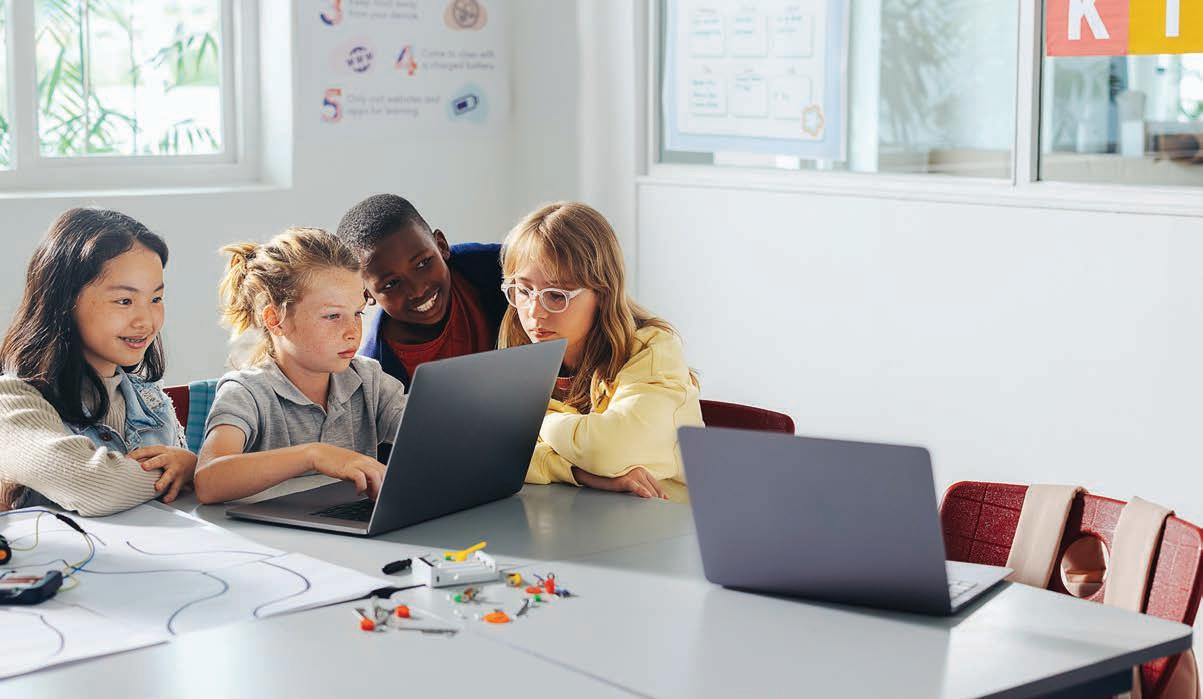
32 education matters primary TECHNOLOGY // GROK ACADEMY
GROK ACADEMY’S WEB.COMP IS AN ANNUAL WEB COMPETITION THAT INVITES STUDENTS TO CREATE A FUNCTIONAL WEBSITE WHILE LEARNING
WEB DESIGN ALONG THE WAY.
Teaching children about web design is an important part of preparing them for the future digital economy.
SOLVING
Designing and building a website requires practising logical thinking and breaking down complex systems into smaller more manageable tasks, making it an ideal way to introduce students to computer programming concepts and other STEM-related subjects, explains Ms Weaver. “By learning about web design, students can develop a keen eye for aesthetics and visual communication in the digital world which are skills that are transferrable across a number of other disciplines.”
Before learning to code, web design starts with creative problem solving. “Learning how to approach and solve a problem creatively is key to learning the fundamentals of web design. This doesn’t require any coding HTML or CSS and is accessible curriculum for younger students,” says Ms Weaver.
The artistic nature of how things are presented and how they look, as well as the human and usability aspects, are central to good web design, she explains. After defining a problem, students are encouraged to think from the perspective of their users’ needs and address those needs through design elements.
“When we’re looking at teaching web design skills, it’s about empathy and the ability to think about people who have additional needs when considering how they would like to use something to make websites inclusive and accessible to everyone,” says Ms Weaver.
“As a personal example, my aunt is blind and has 10 percent of her vision, so I grew up with somebody who was differently abled in my family. When computers became a part of everyday life, I saw how she had to use a screen reader to interact with her computer. She needs a high-contrast screen and the ability to increase the screen size to use her devices. I was really fascinated by finding ways to make things more accessible for her in the physical world.”
TEACHING WEB DESIGN TO PRIMARY AGED STUDENTS
The first step to introducing web design into the primary curriculum is getting students to use some websites and start thinking about which ones they like and don’t like and why, according to Ms Weaver.

“Teaching web design concepts to children starts with getting them to study what the building blocks of a website are and the conventions and
consistent features that most websites have such as a homepage and a menu that clicks out from the top corner,” she says. “Examples of fun web design assignments teachers can give students include giving them a topic to design a layout for or giving them an audience to design for and challenging them to think about the design from the perspective of who will be using the website.”
This could entail using simple paper wireframes without using a computer and asking students to place things into a layout, she explains. Alternatively, students can mockup websites in PowerPoint, or Keynote, which is an easy way for them to design something where they can practise using the hyperlinking function to move to different slides. It’s also a great way to create a working prototype for a website they want to create, while building up a foundation for digital literacy skills and learning about the design process.
“By giving students an opportunity to learn about the principles of design and create an aesthetic, functional website that can be used in the real world, they are empowered to navigate digital spaces with greater confidence and become contributors to the world of digital technology, rather than passive observers,” Ms Weaver concludes.
GROK ACADEMY WEB.COMP 2023
Grok Academy’s Web.Comp is an annual web design competition open to school students that teaches HTML and CSS, as well as the building blocks needed to build a website from scratch. The competition has two components: Learn (Beginner or Intermediate level) and Tournament. Learn is a four-week series of challenges where students learn as they go. Each week, Grok releases interactive notes with the information students will need to complete the week’s web design challenges. Students earn points for completing problems and claim a place on the leaderboard and participants will receive certificates for their results in this competition. The Learn competition starts 23 October.
Meanwhile, Tournament is a week-long competition where students can design their own web pages and submit their creations to compete against designs from other students. They can also vote for their favourites. The Tournament begins on 20 November. EM
33 education matters primary
By learning the principles of creating a functional website, students can navigate digital spaces with greater confidence.
The classroom imagines a new era of learning
IMPROVING LITERACY AND NUMERACY OUTCOMES FOR AUSTRALIAN STUDENTS REQUIRES MORE THAN DESIGNING A CURRICULUM THAT MEETS EDUCATIONAL STANDARDS. TO DRIVE BETTER LEARNING OUTCOMES, IT’S NECESSARY FOR TEACHERS TO CREATE ENGAGING CLASSROOM MATERIAL AND INSPIRING LESSON PLANS
The Samsung Flip Interactive Display is wellsuited for educational environments for several reasons, including its creative and collaborative capabilities; its user-friendly interface; its opensource software platform; it’s high resolution display and powerful built-in speakers; it’s clever built-in tools and templates; it’s safety features and just generally, it’s overall versatility as a teaching tool which lends to streamlined lessons that include digital and multimedia aspects and interactive touch screen options.
VERSATILE DISPLAY AND SHARING
images and digital content to present while delivering the curriculum. Now, imagine that this modern classroom is a hub of creativity, brainstorming, and collaboration where students are fully engaged and eagerly raise their hands, clamouring for the opportunity to participate in educational activities and curriculum assignments.
This is the modern classroom, and it’s not the near or distant future, it’s possible – and it’s happening right now in schools around Australia.
With the advancement of smart technology, the classroom has transformed the way teachers deliver lessons in recent years and a new era of learning has emerged.
SAMSUNG ENHANCING CLASSROOM TECHNOLOGY
Samsung believes that digitalisation has the power to rethink, reimagine and redefine education by facilitating a connected campus using display technology. And when it comes to creating interactive and engaging learning experiences in the classroom, the Samsung Flip Interactive Display optimises this experience by offering a range of features that can bring lessons to life and seamless integration into the classroom and ultimately, help to improve teacher’s workflows and student learning outcomes.
The Flip Interactive Display includes front panel ports for USB and HDMI connections and support a variety of media formats to allow educators to incorporate multimedia elements into lessons. It allows teachers to import various content types, such as PDFs, images, or videos, and share them on the screen. This flexibility enables educators to incorporate multimedia resources and interactive materials into their lessons, enhancing student engagement and understanding.
The Flip Interactive Display enables teachers to save and share the content created during the class effortlessly. They can quickly export notes, drawings, or recordings to a USB drive or email them to the students. This feature facilitates effective knowledge retention and allows students to review the material outside the classroom.

34 education matters primary TECHNOLOGY // SAMSUNG
Multimedia, technology, and interactive learning materials help drive student engagement.
SMOOTH AND NATURAL WRITING EXPERIENCE
The Flip Interactive Display allows teachers and students to write, draw, and annotate on the screen using a realistic and intuitive writing tool that provides a pen-to-paper writing experience. The screen pressure has 2,048 touch points and a 26ms latency for smooth, fast, professional artlevel precision.
MULTI-TOUCH FUNCTIONALITY
The Flip is equipped with advanced pen and touch recognition technology, enabling multiple users to write at the same time, encouraging collaboration between students and teachers through learning activities or interactive quizzes, and group work on the screen to encourage students to engage with content together.
HIGH-RESOLUTION SCREEN AND POWERFUL SPEAKERS
The high-resolution display and powerful front and rear speakers are designed to engage students all the way to the back of the classroom and facilitates easy sharing of presentations, videos, and lesson materials.

COMPATIBILITY WITH LEARNING APPLICATIONS
The Flip also supports handy educational applications, such as whiteboarding tools, calendars, schedules, rulers and protractors. These apps allow teachers to create engaging activities, interactive quizzes, or virtual simulations, fostering a dynamic learning environment.
SCREEN MIRRORING AND CONNECTIVITY
The display allows wireless screen mirroring for streamlined integration with other compatible devices, so teachers can connect their devices, such as laptops or tablets, and project their screens onto the display. This feature enables real-time sharing of content, encouraging active participation from both the teacher and students.
EASY NAVIGATION AND BROWSING
The Flip display offers intuitive navigation and browsing capabilities, making it easy for teachers to switch between different applications, documents, or websites during their lessons without any
allowing them to present and organise content in a linear manner. This feature is particularly useful for subjects like maths or science where step-by-step explanations are necessary.
PEACE OF MIND
With hygiene and safety such key considerations in schools, the UL-certified anti-microbial coating and proprietary shatter protection film help offer extra confidence when choosing Samsung.1 Even better news is the screen is easy to clean.
IN SUMMARY: KEY FEATURES AND BENEFITS
• Easy to understand user interface with intuitive menu options and settings
• 26ms latency touch screen writing tool and 2,048 touch points for professional art touch screen pressure
• Built-on open-source software and multiple connectivity options
• High-resolution screen
• Front panel with external USB and HDMI ports
• Rear handle for easy moving
• Screen mirroring
• Powerful front and rear speakers offering 40w sound frequency
• Screen mirroring and casting capabilities
• Video conferencing
• Interactive display
• A library of how-to videos
• A dedicated suppor t team
• 5-Year On-Site Education Warranty
The combination of interactive features, collaborative capabilities, versatility, and userfriendly design make the Samsung Flip Interactive Display an ideal tool for teaching and learning in educational settings. Furthermore, The Flip provides a versatile and intuitive platform that encourages student engagement, collaboration, and interactive learning, making teaching more interactive and effective.
By embracing connected classroom technology, schools have the power to revolutionise the way students learn and bring new meaning to the art of teaching. With the Samsung Flip Interactive Display as their guide, educators and students can embark on a journey together exploring the endless possibilities that new technology can offer and transform the education landscape for generations to come.
To make life even easier for schools, The Flip and other Samsung products relevant for Education are now also available for purchase from the Samsung Business website, with exclusive education pricing. Ordering add-on accessories, and optional installation, plus accessing technical support, and helpful how-to videos all in the one place has never been easier. EM
For more information, visit: samsung.com/au/ business/display-solutions/education-schools
1. To perform its antibacterial function, this product has been treated with the biocidal substance Silver phosphate glass. Antibacterial property does not protect users against bacteria and provides no protection against viruses including Covid-19. Antimicrobial Coating is on surface of screen only and the effect may vary depending on conditions of use. Antibacterial certification: UL2282 which is granted when the antibacterial effectiveness is more than 99%. (Test method (JIS Z 2801): after inoculation of 0.4cc of liquid with bacteria (Escherichia coli and Staphylococcus aureus) on specimen(5cm x 5cm), a sterilised film (4cm x 4cm) is adhered and left in a thermo-hygrostat with a relative humidity of 90% or more at 35°C for 24 hours, and then the efficiency of killing of the bacteria is measured / Test agency: KOTITI Testing & Research Institute)
35 education matters primary
Students using the Flip Interactive Display to tutor one another.
Smarter technology frees time to focus
A typical teacher works 54 hours a week. Less than half of that time is spent directly teaching students.1 Training educators in time management can only go so far, especially if school-provided technology is getting in their way. Even minor tech nuisances are a big deal when the threat of burnout is near.
Studies show that 82 percent of K-12 teachers want more time to focus on teaching.2 To achieve this, educators must be equipped with the best tools for the job, right from the start. Smarter technology can free up critical school personnel to focus on what matters to them most. Lenovo digital solutions running
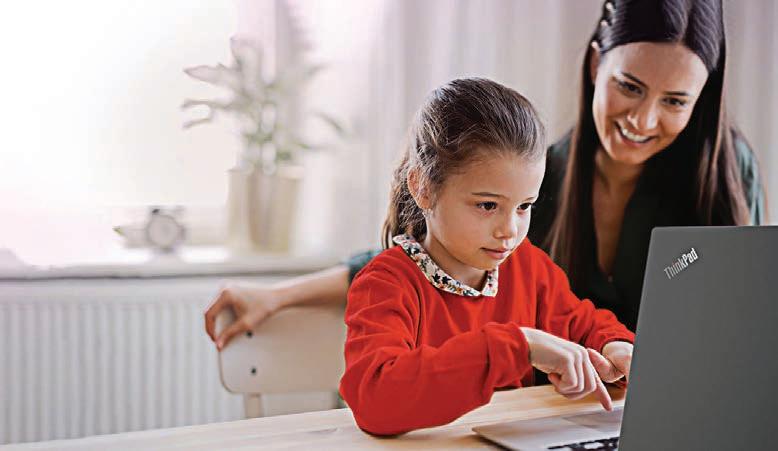

Windows 11 and powered by the built-forbusiness Intel vPro, An Intel EvoTM Design, are ideal for teachers and administrators. They’re designed and engineered to maximise productivity and eliminate micro-frustrations that deter focus.
IS THE DIGITAL SOLUTION INTUITIVE AND EASY TO LEARN?
Productivity is important for teacher and administrator retention, student outcomes, and community-building. But today’s critical school personnel are dealing with challenges that distract them from achieving results in every
area. “The level of maturing and engagement among students is not there,” one district administrator told The Brookings Institution in a recent survey.3 “It’s not just a child who has lost ground in reading, it’s that they don’t even know how to function in a classroom with other kids.”
Emotional distractions are unavoidable. Technology distractions aren’t. It will take time for students and parents to readjust. Educators must have technology with an accessible interface, fast connection, and intuitive UX to combat the interference. Be sure to also consider if substitute or supply teachers will be able to quickly learn and use the in-class solutions. Shortages of these invaluable educators are predicted to continue,4 and easyto-use technology can help build confidence for newly trained substitutes to jump right in.
Here’s an easy way to simplify: Use the same classroom management system, such as LanSchool, across devices. “That means we can become experts on one product instead of having to become familiar with multiple platforms,” says an IT support specialist whose community school uses LanSchool Air.5 “And the same is true of our teachers. Using one solution makes training easier... This puts the power back in teachers’ hands and decreases our work on the IT side.”
IS THE DIGITAL SOLUTION PROVIDING THE USER WITH AUTONOMY OVER THEIR WORKLOAD?
Teachers and administrators have done a commendable job managing the proliferation of new digital tools and devices, but 87 percent
36 education matters primary TECHNOLOGY // LENOVO
EDUCATORS NEED TECHNOLOGY THAT WON’T GET IN THEIR WAY. PRODUCTIVE DIGITAL LEARNING ENVIRONMENTS DEPEND ON IT.
Lenovo’s ThinkPad X1 laptops can quickly snap apps side-by-side for increased productivity.
Lenovo’s ThinkPad X1 laptops are powered by the Intel vPro platform.
say they are spending more time managing technology.6 This leaves less time to spend with students, and most teachers (63 percent) say they don’t have a lot of control or influence over their schedules.7 If given the choice, they’d spend less time on general administrative work.
To help, deploy digital solutions that can handle more compute-intensive applications. Try Lenovo’s ThinkPad X1 laptops, powered by the Intel vPro platform with built-for-business performance for the classroom and Windows 11, which can quickly snap apps side by side for increased productivity.

IS THE DIGITAL SOLUTION’S PERFORMANCE COMPATIBLE WITH THE USE CASE?
The way K-12 schools communicate with students, parents, and other community members has drastically changed in the last two years. It will continue to change in the next two: Schools want more digital communications, including a significant increase in the use of mobile apps and texting.8 More than two-thirds of schools use five or more different channels of communication. This is just one example of the rapid evolution of school administrative roles and responsibilities. New technology must be versatile enough to adapt to changing administrative tasks as well as individual work styles. If it can enhance the work experience by adjusting to any scenario, even better.
The “use case” of K-12 technology is in a constant state of flux. Lenovo digital solutions with 12th Gen Intel CoreTM processors feature revolutionary architecture that intelligently allocates workloads to the right thread on the right core based on real- time analysis, providing optimised business-class performance to teachers every day. Device design can further support versatility. The ThinkPad X1 Yoga running Windows 11 goes from keyboard to ThinkPad Pen Pro in seconds, powered by Intel vPro, An Intel EvoTM Design with 12th Gen Intel CoreTM i7 processors.
WOULD AN END-TO-END SOLUTION BE APPROPRIATE?
End-to-end management and support services can unlock even more value from K-12 technology investments by ensuring they’re always protected and devices are relevant to current needs, teaching styles, and student dynamics. Rather than sourcing solution components on your own, Device as a Service (DaaS) models provide regularly refreshed hardware, software, and services for one monthly fee. Need to own devices? DaaS models allow for asset ownership, too.
Lenovo TruScale DaaS plans can be tailored to your needs with financing customised for your education budget cycle. Cutting-edge hardware, software, expert services, and 24/7 Premier Support all come wrapped up in a single, flexible solution for a predictable monthly cost. With the right DaaS model, education institutions of every shape, size, and teaching style can access the leading technology they need to drive learning progress at a speedy but sustainable pace.
A trusted partner can help schools empower teachers and administrators to deliver their best work. Lenovo is the largest global provider of PCs in the education sector, providing a broad portfolio of software and hardware solutions for student safety, digital instruction, and classroom management powered by Windows 11 on the Intel vPro platform for an unrivaled business PC solution. EM

To learn more, visit: www.lenovo.com/K-12-Education
Sources
1. EducationWeek, “Teachers Told Us How They Rack Up Those 54 Hours of Work a Week,” April 2022
2. Winston School of Education and Social Policy, “Merrimack College Teacher Survey,” 2022
3. The Brookings Institution, “Restoring Pandemic Losses Will Require Major Changes in Schools and Classrooms, Superintendents Say,” 2022
4. National Association of Schoolmasters Union of Women Teachers (NASUWT), “Supply Teacher Crisis Cannot Be Ignored,” 2022
5. Lenovo, “Simplify IT support and improve teaching with cloud and locally hosted solutions offered jointly,” LanSchool case study, 2020
6. Absolute, “Distance Learning’s Impact on Education,” 2020
7. EducationWeek,“Here’sHowManyHoursaWeek Teachers Work,” April 2022
8. Parent Square, “Communications Future Survey: Educator Perspectives on What Works to Reach Families and What Should Change,” April 2022
37 education matters primary
“The level of maturing and engagement among students is not there,” one district administrator told The Brookings Institution in a recent survey.3 It’s not just a child who has lost ground in reading, it’s that they don’t even know how to function in a classroom with other kids.”
Lenovo is the largest global provider of PCs in the education sector.
Building a strong foundation for digital literacy
In today’s digital age, the integration of technology in primary school curriculum has become increasingly important. Technology has the potential to revolutionise the way children learn, providing them with endless possibilities for exploration and engagement. By leveraging technology effectively, educators can enhance the learning experience and meet the diverse needs of their students. One way to achieve this in the primary school curriculum is by incorporating interactive learning tools and applications. These can provide students with immediate feedback, allowing them to track their progress and address areas of improvement. For example, online maths games and programs can make learning fun by turning it into a game-like experience while simultaneously teaching important concepts.
Technology enables educators to provide students with personalised learning experiences and improve digital literacy, ultimately preparing them for a successful future working in the digital economy. With online platforms and adaptive learning systems, teachers can tailor instruction to individual student needs, thereby maximising their learning potential. This not only
fosters academic growth but also promotes independence and self-directed learning.
THE BENEFITS OF BUILDING ONE EDTECH ECOSYSTEM ON CAMPUS
Founded in 2019 as the new Catholic P-12 School on the Sunshine Coast, Good Samaritan Catholic College wanted to empower educators by having one creative and collaborative ecosystem across the school, according to Principal Greg Myers. For this purpose, the school chose the Apple platform: iPad from Prep to Year 9 and Mac for the Senior Years.

“Education is all about empowering young people to take their place in society. So, when we’re setting up a new school, you’ve got to get everything right the first time because it’s going to last for a long time,” says Mr Myers. “We went with the Apple platform because we believe it’s the best platform for our young people to access the curriculum through technology.”
He says students can see the benefit of having one integrated ecosystem between the Macs and the iPads in the classroom and the program works well for everyone on campus.
“The Prep to Year 3 students share devices, and then from Years 4 to 9, it’s a one-to-one
Apple iPad,” he explains. “Then, as students head into their senior years, it’s important that they have a device that is more capable and that’s where our transition from iPad to the Mac starts in Year 10. The Mac offers them a new platform to expand their opportunities for learning and the power and efficiency the MacBook Air offers is unparalleled.”
Mr Myers maintains that working with JB Hi-Fi Education, an Apple Authorised Education Specialist, to facilitate the program on campus has been a fantastic experience for the school, since the staff first reached out and engaged with them. “They make you feel as though you’re not just another customer or a number in the queue. They’ve been able to ensure delivery of our devices every time and they make it a personal experience with a dedicated Account Manager.”
SOLUTIONS FOR A DIGITAL WORLD
JB Hi-Fi has been around for over 40 years, with its JB Hi-Fi Education business in existence for around 21 of those years. “As part of its larger entity in Australia, JB Hi-Fi Education works to assist schools around the country with their one-to-one deployment of devices, as well as many other electronic
38 education matters primary TECHNOLOGY // JB HI-FI EDUCATION
WHEN IT COMES TO LEVERAGING TECHNOLOGY TO ALLOW STUDENTS TO BETTER ACCESS THE CURRICULUM AT EVERY LEVEL OF THEIR SCHOOLING, JB HI-FI EDUCATION PROVIDES THE TECHNOLOGY AND SUPPORT TO SCHOOLS FOR BUILDING A STREAMLINED AND EFFECTIVE DIGITAL ECOSYSTEM ON CAMPUS.
requirements they may have, from white goods through to drones, cameras, and more,” say JB Hi-Fi Education Account Manager, Amber Walker. “We also offer a Bring-Your-Own-Device (BYOD) program which we work with hundreds of schools on.”
Ms Brittany Smith, a Good Samaritan Catholic College teacher who uses Apple iPads to support her curriculum, says that they have helped her encourage students to be more independent and reflective learners in class. “iPads support the delivery of curriculum in my classroom across all learning areas by giving me the ability to set up learning activities on the iPads that students are able to access at any time,” says Ms Smith. “So, if there’s something that we’ve done as a whole class that they need to refer back to, students can go back and have a look at the resources that are there.”
Good Samaritan Catholic College primary students enjoy working with their iPads at school as a more interactive and flexible way to learn. One of those students, Lillian, says: “The iPads are very engaging and easy to use.” Meanwhile, Luka believes “it’s easy to use and [students] can do their work from anywhere.” Charlie says, “The best thing about using my device would probably be the draw tool because it’s got lots of different colours. Just like using a normal pencil you can practise your handwriting.” Isla says, “You can naturally write and highlight stuff, so you know what each question is about.”
Mr Harrison Cartledge, a Good Samaritan
says he enjoys using a MacBook because it helps him connect with students when showing them how to use software. “When we use the same products and we both have a MacBook, I can easily show students how to use Adobe or any other software used in media and they can follow along and replicate what I am doing on their devices,” he says. Good Samaritan Catholic College senior student Molly comments, “My MacBook has made me feel so much more organised. With the different features and the applications, I never feel pressed for time for deadlines, I always just feel ready to go.”
The effective integration of technology in the school curriculum has the potential to revolutionise the learning experience and JB Hi-Fi Education delivers this through consistent support and service to schools and teaching staff.

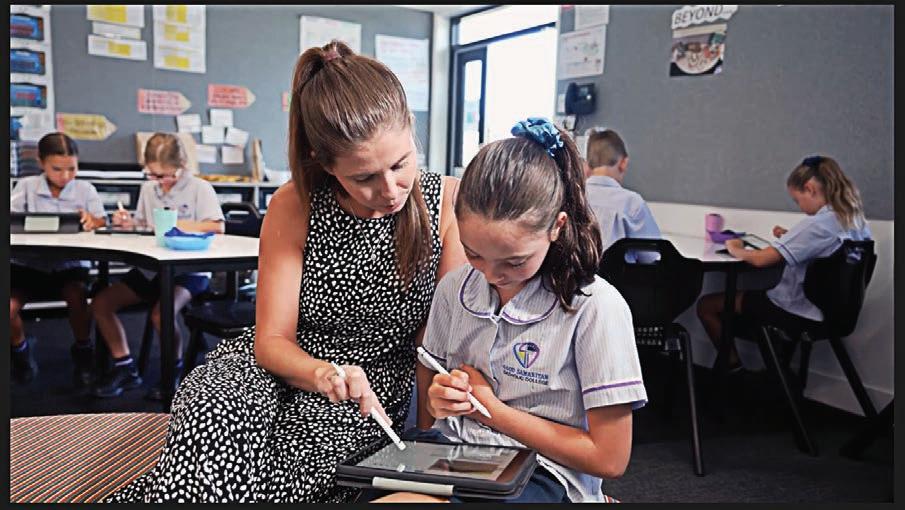
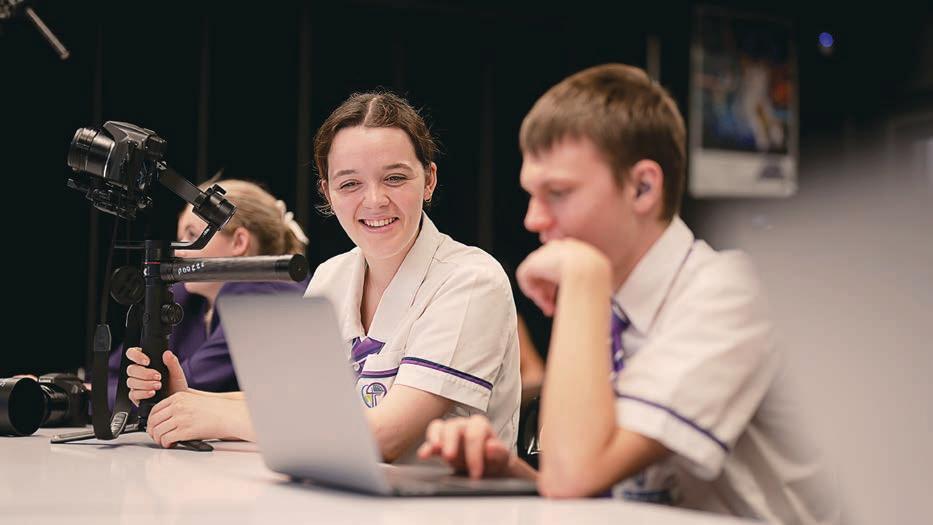

By incorporating interactive tools, personalised learning experiences, and collaborative opportunities, educators can harness the power of technology to create engaging and meaningful learning environments for their students.
“Working with JB Hi-Fi’s Tech Team has been an absolutely seamless process. With the support we have received from JB Hi-Fi, we’ve been able to have our devices ready have our devices in the kids’ hands on the first day of school,” concludes Principal Myers. “The JB team have met every one of our requirements at school here and we’re really happy to continue that partnership moving forward.” EM
39 education matters primary
The school chose to work on the Apple platform: iPad from Prep to Year 9 and Mac for the Senior Years.
iPads have proven to be a more interactive and flexible way to learn for Good Samaritan students.
Good Samaritan Catholic College saw the importance of having one creative and collaborative ecosystem across the school.
To watch the Good Samaritan Catholic College case study, visit: https://qrco.de/ JBGSCC
Dare to be a rockstar
BETTER SOLUTION AND STARTED HER OWN
If education is one of the cornerstones on which society is built on, then teachers are the founders of that cornerstone. Working as everyday heroes in the lives of children, families, and communities, the power of a good teacher to empower and change lives cannot be understated. Yet, the rate of teacher attrition in Australia has risen steeply over the last few decades and continues to skyrocket. Without a national database to garner an exact figure from, experts from the University of Melbourne estimate that anywhere from 8 percent up to 50 percent of teachers leave the profession within the first five years of employment.
ADDRESSING TEACHER ATTRITION
A high rate of teacher turnover comes at a significant cost to the Australian education system, both for the nation’s budget and the educational pathways of Australian citizens. That’s why, in recent years, a considerable amount of research has been done toward understanding the reasons why so many teachers leave the profession prematurely. Results of several studies have shown that the reasons for early departures vary but ranking high among them consistently were heavy workloads, insufficient recognition and reward, low wages, and poor work-life balance, according to the Australian Institute for Teaching and School Leadership (AITSL). All these factors combined can be detrimental to teacher well-being, leading to feelings of overwhelm, burnout and a general lack confidence in their everyday lives.

40 education matters primary BEYOND THE CLASSROOM // BEYOND THE CLASSROOM AUSTRALIA
WHEN PETA JEPPESEN BECAME OVERWHELMED IN HER ROLE AS A SCHOOL PRINCIPAL AND NEEDED SUPPORT, SHE FOUND THE RESOURCES ON OFFER WERE INADEQUATE, OR SIMPLY DID NOT EXIST. LIKE ANY GOOD ENTREPRENEUR, SHE SET TO WORK
DEVELOPING A
Ms Peta Jeppesen founded Beyond the Classroom in 2018.
THE BEYOND THE CLASSROOM STORY
In 2018, Ms Peta Jeppesen needed somebody to talk to about the challenges she was facing in her role as a School Principal, but always found herself in the highest position of authority, faced with making difficult decisions on behalf of the students, staff, and parents depending on her.
“I was feeling burned out and finding it increasingly difficult to ground myself in my work, but I didn’t want my colleagues to see that I couldn’t manage all of these difficult situations and scenarios I was faced with in my role,” she says. “In particular, I didn’t want to offload my problems onto staff members who were dealing with their own stress in the job and saw me as their support. Instead, I allowed my frustrations to continue building and my self-care and wellbeing to go unchecked, which ultimately furthered the cycle of burnout for me.”
It was at this point that Ms Jeppesen recognised there was a gap in the education system when it comes to managing teacher wellbeing on the job. “I started doing a lot of research into selfcare and wellness. I quickly realised how important it is for teachers and principals to be in a good state of mind and body wellness, keeping energy levels high to make critical decisions and make sense of things on the job every day.
“I began to study areas of interest to me that I could learn from and that would allow me to provide better support to my colleagues and contemporaries. I looked at how the mind works, non-violent communication, and how to honour and respect our feelings. I also did some study into women’s cycles and how that impacts the way we work,” she explains.
Ms Jeppesen began putting together a wellbeing program for teachers that would
eventually become Beyond the Classroom. The program has been designed to provide coaching and support to teachers and can be integrated into a school wellbeing program or accessed for individual coaching. “I thought about what I needed when I was a teacher and tried to tailor my programs to the individual needs of my clients. I want my program to feel like an oasis for teachers; a place where they can go to reenergise, work through the challenges they are navigating in their roles and find a renewed sense of inspiration in their work,” she says.
HELPING EDUCATORS PRIORITISE SELF-CARE
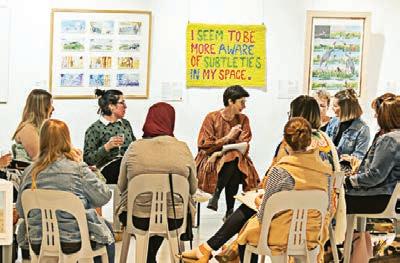
The core philosophy of Beyond the Classroom, explains Ms Jeppesen, is to support teachers in being the best they can be in the classroom or in the principal’s office. Designed to provide support to teaching professionals by instilling confidence and help them adapt to the changing demands of the profession, Beyond the Classroom also works to support schools in developing a framework for prioritising teacher workflows, wellbeing, and self-care.
“As a former teacher and principal, with more than 20 years of experience, I understand the challenges that schools face. That is why I have used my experience to put together these transformative coaching programs,” says Ms Jeppesen.
The programs offered by Beyond the Classroom are Dare To Be A Rockstar Teacher, 1:1 Coaching for Teachers or Principals, and the School Coaching Program. Dare To Be A Rockstar focuses on helping teachers prioritise their authentic selves, health and wellbeing in the classroom and take emotional and intuitive needs into account in their roles while building confidence and finding a renewed sense of purpose in their role. Meanwhile, the 1:1 Coaching Program for teachers or principals focuses on supporting teachers and principals in improving work/life balance, communication, relationships with staff and fostering a positive community culture on campus, as well as managing operational and administrative tasks. The School Coaching Program supports various staff members alike to build a healthier school
ecosystem through the 1:1 coaching program for both teachers and principals with a common goal.
“I really enjoying talking with teachers and giving them a voice. It’s about honouring and valuing the education profession, and not being complacent in it,” Ms Jeppesen says. “It’s not just about achieving basic wellbeing alone but taking them to the next level and allowing them the freedom to be creative and innovative in their area of specialisation. This, in turn, benefits the children that they teach.”
She explains that once teachers have got the time and space, and have received help with their self-care, it comes down to making themselves a priority. “I’ve seen teachers go on to publish a book and do their Master’s. I try to work with them to expand their career horizon by asking things like: If everything was possible, what would you do? What would it look like? What would it feel like?” she explains.
“The more we spend time in that space, especially the ones that have come back and done some more work, the more they can step outside themselves. Teachers that felt the need for change, have gained the confidence to have a voice and to build new relationships and get out into the community more.”
For her, seeing teachers that are about to leave the profession discover a renewed energy to continue is the most rewarding part of the job. “When I speak with teachers, I asked them questions about what their challenges are, what their career goals are, and a number of them spoke about wanting to retire. For some, they’re getting to an age where they want to change their career and that’s okay.
“But for others, it’s because of the circumstances, the rush and not being able to control their working environment,” she says.
“Often times after I work with someone and we have a conversation, I find ways to better support them and make some changes that will allow them to continue to work in the profession. A lot of these teachers have years of valuable experience. There are so many good teachers out there that with a bit of help and support, and a voice, they could be there for another three to five years for them. It starts with making yourself a priority.” EM
41 education matters primary
Ms Peta Jeppesen works with teachers, principals and schools.
He is the Managing Director of The Brown Collective, focused on the formation of educational leaders and partnering with schools, networks and system to enable sustainable impact. The organisation reflects both his collective experience over 40 years in policy, strategy and leadership development – and that of the remarkable global network he has developed during this career.
Moral Injury: a stressor for school leaders
AT THE HEART OF TEACHING AND SCHOOL LEADERSHIP IS A DESIRE TO MAKE A POSITIVE CONTRIBUTION AND IMPACT ON THE LIVES OF YOUNG PEOPLE. A MORAL PURPOSE IS AT THE CORE OF ALL ASPECTS OF THE PROFESSIONAL PRACTICES OF EDUCATORS, ACCORDING TO DR STEPHEN BROWN, MANAGING DIRECTOR OF THE BROWN COLLECTIVE.
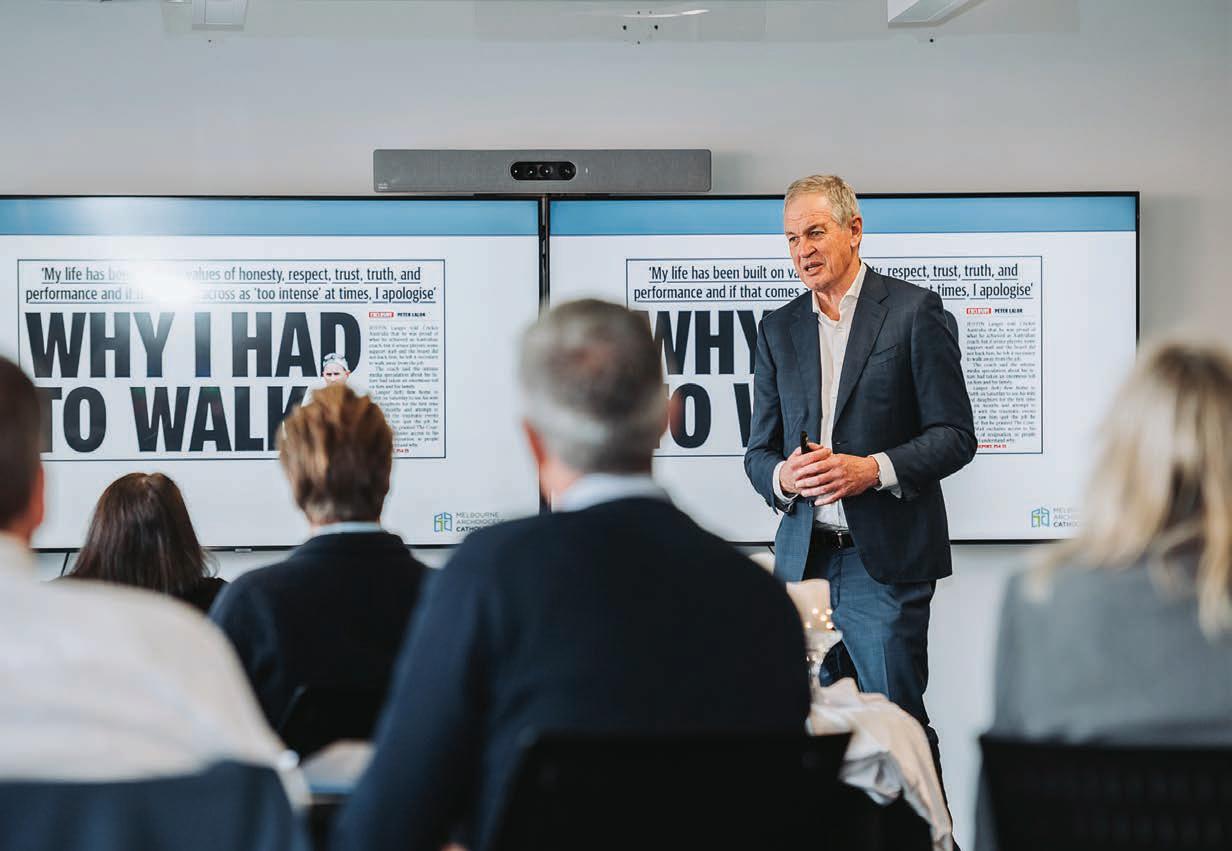
Headrest, the 2023 Annual Wellbeing Report examining the health and wellbeing of headteachers in England, identified six common sources of stress: anxiety and burnout, bullying/ intimidation, staff retention, staff recruitment, unintelligent accountability, and moral injury. The key themes articulated in the report are like the ones expressed consistently in reports such as the longitudinal findings from the annual Australian Principal Occupational Health, Safety and Wellbeing Survey. The Headrest Report 2023 identification of moral injury as a stressor for school leaders does not receive the discourse it should in assessing the challenges of leading a contemporary school.
WHAT IS MORAL INJURY?
Moral injury is the damage done to one’s conscience or moral compass when that person perpetrates, witnesses, or fails to prevent acts that transgress one’s own moral beliefs, values, or ethical codes of conduct. Such injury causes intense psychological distress. Drescher et.al (2011) describes a moral injury as a “disruption in an individual’s confidence and expectations about one’s own or other motivation or capacity to behave in a just and ethical manner” (p.9). Shay (2014) emphasises leadership failure and a betrayal of what’s right, by a person who holds legitimate authority in a high stakes situation. The concept of moral injury is not new and typically terminology linked to experiences of individuals within the theatre of war, from
the Trojan War (762 BC) to the conflicts of the modern era such as World War II and Vietnam. Moral injury is a phenomenon that is increasingly being seen within an array of professions such as medicine, therapy, and as noted by the Headrest Report, school leadership.
WHAT IS MORAL INJURY IN THE CONTEXT OF SCHOOL LEADERSHIP?
The Headrest 2023 Report notes: “School leaders were regularly faced with having to make decisions that go against deeply held beliefs and principles due to budget limitations, staff shortages and or other constraints. They increasingly found themselves having to opt not for the best option but what they deemed the ‘least bad choice’. For professionals who entered school leadership with the drive to improve provision and pupil outcomes this constant barrage of decision making on a ‘least bad’ basis was dispiriting. It has led to an increasing number of leaders facing an abyss of self-doubt and questioning if school leadership is a role they wish to continue to fulfil” (p.9).
Moral injury is – at its heart for school leaders – a question of ethics, triggered when faced with decisions, directives, or circumstance that challenge our core values, beliefs, and moral code. School leaders are often faced with ethical decisions and moral challenges that lead to moral injury. These challenges arise from decisions that relate to student discipline, inclusive practices, resource allocation, staff,
42 education matters primary EXPERT CONTRIBUTOR // DR STEPHEN BROWN
curriculum choices, standardised testing, and accountability requirements, among others. Indicative situations that can contribute to moral injury are:
1. Implementing or enforcing policies that conflict with personal values. For example, the impact of standardised testing on student wellbeing.
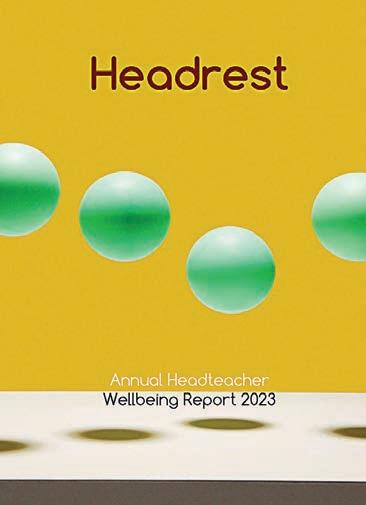
2. Witnessing or being unable to prevent harm to students. School leaders may witness situations where students experience abuse, neglect, or discrimination and feel a sense of moral distress.
3. Balancing competing interests: School leaders often must make difficult decisions that involve balancing the needs of various stakeholders, including students, parents, teachers, and the broader community. These decisions may put them in situations where they feel they are compromising their ethical principles or unable to meet the diverse needs of everyone involved.
4. Ethical dilemmas related to educational equity: School leaders may grapple with dilemmas relating to promoting educational equity such as allocating limited resources or addressing systemic barriers that perpetuate inequities. It can be argued that ethical decision making
is a core and necessary aspect of leadership and indeed the leadership of an educational institution. Duignan (2007) notes that these present as: the rights of the individual versus those of the group or community; the exercise of compassion versus the rigid following of rules and the provision of quality support services and efficient use of scarce resources.
Teacher shortages, ever increasing demands on schools from various quarters; the constant tension of schooling provision that responds to excellence and equity; and respecting the need for individual rights balanced against a contestable common good are trends that can increase the moral injury to school leaders.
WHAT CAN BE DONE TO SUPPORT SCHOOL LEADERS?
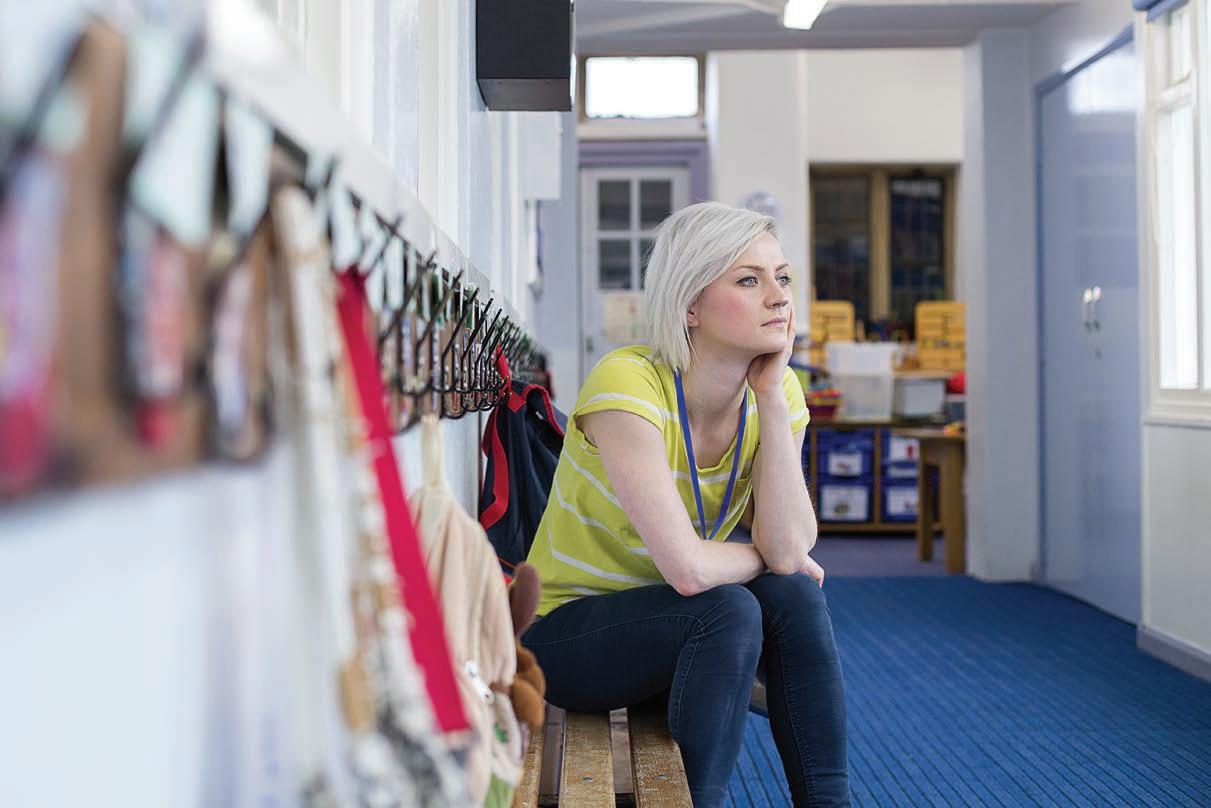
Many of the circumstances that trigger conditions that generate moral injury for school leaders continue to be a part of a larger policy debate and contest. Given the above caveat there are proactive measures that can be enabled to support school leaders in their ever-increasingly complex roles. It is important to create environments that support ethical decision making, foster open dialogue, and provide avenues for reflection and support. This can include professional
learning programs that address moral dilemmas, establishing ethical guidelines and frameworks, promoting collaboration among school leaders to share experiences such as communities of practice and the provision of counselling and support services.
The Brown Collective’s flagship leadership programs, Leading with Integrity for Excellence, and Professional Practices, provide school leaders with the opportunity to enhance their capabilities and mindsets to lead in such circumstances. A moral purpose is at the core and call of educators. The ever-increasing challenge is to enable school leaders to deliver on such a purpose without injury. EM
43 education matters primary
Implementing or enforcing policies that conflict with personal values can cause moral injury for teachers, says Dr Stephen Brown.
The Headrest Report is an annual UK document summarising issues causing the most stress and anxiety for headteachers.
Eco-friendly play spaces enrich childhood development
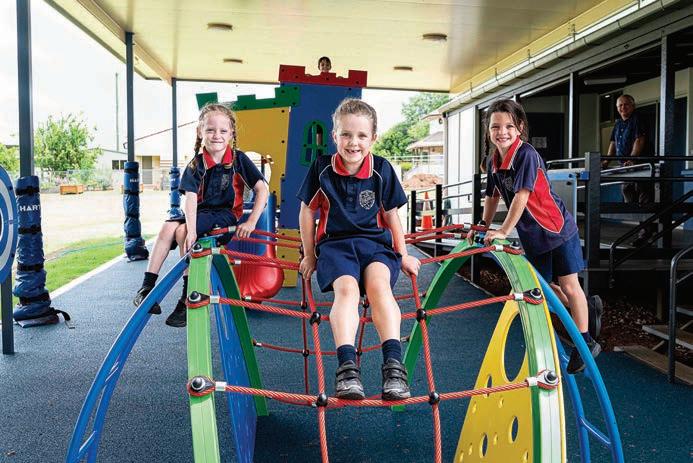
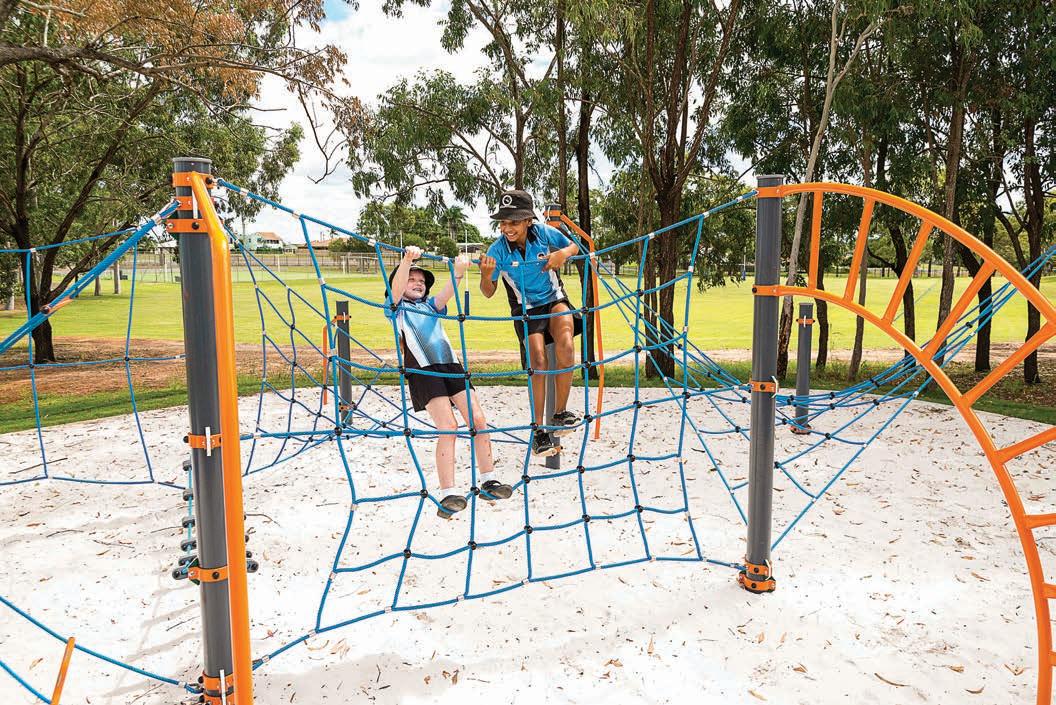

WillPlay’s dedication to delivering highquality playground equipment, prioritising safety, enjoyment, and sustainability, sets them apart in the playground industry. As an Australian- made and owned business, the company’s approach to creating ecofriendly play spaces is woven into their fundamental operational principles. With a strategic focus on material selection, providing lasting value throughout, the school’s park or playground project becomes the norm rather than the exception. Consequently, customers can expect a lifetime structural warranty for all of WillPlay’s play and fitness systems, and as an added bonus, these systems are 100 percent recyclable at the end of their lifespan.
EXTENDED ASSET LIFE, POWERED BY PREMIUM MATERIALS
At the core of each play and fitness system from WillPlay lie premium materials, including marine-grade aluminium and stainless steel, which endure the test of time. A robust polyester powder coat system further enhances these materials’ longevity. Embracing the potential of recycled plastics, WillPlay’s designs favour sustainable practices, contributing to landfill reduction and natural resource preservation. These recycled plastic elements offer superior advantages over traditional materials by resisting rot,
BEYOND THE
CLASSROOM // WILLPLAY
THE WILLPLAY COMMITMENT IS TO CREATE HIGH-QUALITY PLAYGROUND EQUIPMENT THAT IS ROOTED IN ENVIRONMENTAL STEWARDSHIP.
The Boreham Park playground in Bundaberg offers climbing, swinging, gliding, bouncing, and much more, designed to ignite a sense of adventure.
insects, and moisture – eliminating continuous maintenance, improving safety, and leaving a sustainable legacy for future generations.
REDEFINING DURABILITY TO PROLONG EQUIPMENT LIFE
Choosing lower-quality materials can lead to a shortened product life and higher maintenance expenses over time. Traditional materials, such as timber and steel, can harbour hidden costs and maintenance issues over time. For instance, timber can swell under environmental conditions, leading to cracking and creating potential entrapment issues. Moreover, elements like rusting metal attachments can degrade the aesthetic appeal and compromise the structural integrity, shortening the equipment’s asset life. In-ground footings, a commonly overlooked part of structures, can also
In contrast, WillPlay takes a different approach. Their use of custom-designed, marine-grade aluminium extrusions, a robust and durable alternative, minimises these risks. Aluminium posts and timber composite panels, unlike steel and timber, don’t suffer from rot or swelling, ensuring the investment stands the test of time and elements. This, in effect, offers an efficient alternative to timber play equipment, circumventing the significant ongoing maintenance costs and hidden deterioration risks associated with traditional materials.
EVOKING NATURAL AESTHETICS
Timber look aluminium posts encapsulate the cosy wooden appeal while leveraging the sturdy, low-maintenance advantages of Australian made marine-grade aluminium. Unlike regular wood, this material resists weathering while avoiding splintering or decay, delivering resilient playground equipment even in harsh coastal conditions. Matching the allure of natural wood, composite wood panels are resistant to decay, pests and moisture, striking an optimal balance between aesthetics and durability.
DESIGNED TO BE RECYCLED
WillPlay believes in designing playgrounds with product end of life in mind. Consequently, when the playground reaches the end of its usable life, the equipment can be effortlessly recycled. The modular design allows efficient material separation for recycling—aluminium, stainless steel, recycled plastics, timber look aluminium, and composite wood. Emphasising recyclability aligns

with the circular economy principles, minimising waste while optimising resource efficiency. This initiative inspires environmental awareness and responsibility beyond merely providing costeffective maintenance solutions.
AUSTRALIAN MADE – A SYMBOL OF QUALITY AND COMMUNITY BUILDING
Being a registered ‘Australian Made and Owned’ business, WillPlay is more than just a local business—it contributes towards the Australian community’s sustainable growth. WillPlay’s complex wide-ranging services bolster the local economy, nurture sustainability, and provide safe, eco-friendly environments for children to play and flourish. WillPlay’s commitment to Australian manufacturing is also evident in their selection of local suppliers, ensuring unwavering support to the local industry.


WillPlay’s meticulous approach towards premium material selection contributes towards exceptional product performance, extensive product lifespans, and a healthier planet while supporting the local economy. Its choice of industry-leading materials underlines a firm commitment to quality, guaranteeing the durability and strength of every WillPlay system. With WillPlay, it’s not just about creating playgrounds—it’s about creating lasting memories in a safe, durable, visually appealing, and ecofriendly environment. EM
To learn more, visit: www.willplay.com.au/ materials
45 education matters primary
Children at St Joseph’s Catholic Primary School in Childers, Queensland.
The WillPlay-built playground at Avoca State School, Bundaberg. Citizens Park in Victoria.
AGRICULTURE FARMING EDUCATION WASTE
MANAGEMENT RESOURCE MANAGEMENT
CONSERVATION MANUFACTURING RESOURCES
ENERGY HEALTH & SAFETY INFRASTRUCTURE
ENGINEERING MINING CONSTRUCTION
QUARRYING AGRICULTURE FARMING EDUCATION
WASTE MANAGEMENT RESOURCE MANAGEMENT
CONSERVATION MANUFACTURING RESOURCES
ENERGY HEALTH & SAFETY INFRASTRUCTURE
ENGINEERING MINING CONSTRUCTION
QUARRYING AGRICULTURE FARMING EDUCATION
WASTE MANAGEMENT RESOURCE MANAGEMENT
CONSERVATION MANUFACTURING RESOURCES
ENERGY HEALTH & SAFETY INFRASTRUCTURE
ENGINEERING MINING CONSTRUCTION
QUARRYING AGRICULTURE FARMING EDUCATION
WASTE MANAGEMENT RESOURCE MANAGEMENT
SEARCH FOR TOP INDUSTRY TALENT THROUGH OUR JOBS BOARD. CONNECT WITH ALIGNED CANDIDATES.
BOOST YOUR CHANCES OF FINDING SKILLED APPLICANTS.
SCAN TO CREATE AN ACCOUNT TODAY AND DISCOVER YOUR PERFECT MATCH!
POWERED BY CAREERONE
Maths anxiety – girls versus boys
MATHS ANXIETY IS A GENUINE AND PERVASIVE ISSUE IN EDUCATION. IT GOES FAR BEYOND A SIMPLE AVERSION TO NUMBERS AND CAN MANIFEST AS A PROFOUND FEAR OR DREAD OF MATHS, HINDERING THE ABILITY TO PERFORM AND LIMITING EDUCATIONAL AND CAREER CHOICES, WRITES DR REBECCA MARRONE FROM UNISA’S CENTRE FOR CHANGE AND COMPLEXITY IN LEARNING.
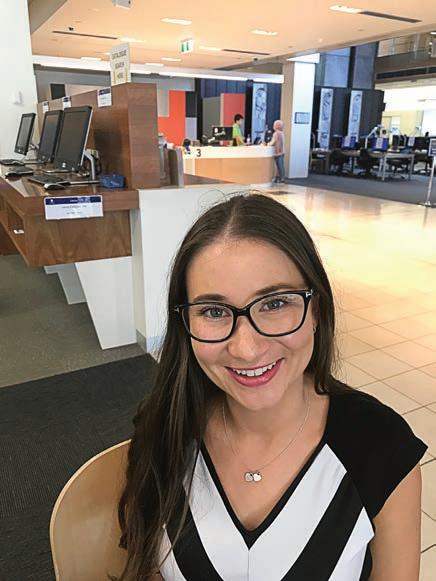
One of the more intriguing dimensions of maths anxiety is gender. Studies consistently show that girls, on average, report higher levels of maths anxiety than boys. This disparity exists even when girls perform as well as or even outpace their male counterparts in maths courses. So, the question arises: where do gender differences originate, and how can educators address them?
Cultural and societal beliefs play a significant role in shaping our perceptions about gender. Many girls, often subtly, are influenced to believe that they might not be as ‘naturally’ adept at maths as boys. And even if not explicitly stated, these stereotypes can diminish confidence and heighten maths anxiety.
This can also happen in the classroom. For example, when boys face challenges in maths, their struggles may be attributed to a lack of effort. Yet when girls struggle this can be inaccurately seen as a lack of ability. And while this may be unintentional, such gendered stereotypes can have profound effects on how children perceive themselves and their abilities.
A promising approach to addressing some of these issues is through creativity. By presenting maths education in new and interesting ways, and by reshaping how problems are approached and introduced, students can engage with the material on a deeper and more intuitive level. And this helps abstract concepts feel more relatable and less
daunting.
Similarly, teachers can actively challenge gender stereotypes. For instance, it’s essential to avoid making generalised statements implying that one gender is better than another in maths. By highlighting achievements across genders and using examples of successful women mathematicians and scientists in lessons, teachers can proactively address gender stereotypes while inspiring and motivating their students.
Incorporating creative problem-solving is another tactic. When teachers introduce maths problems that relate to real-world scenarios or leverage storytelling, they make maths more relatable. Making these abstract concepts tangible can help demystify them and reduce worry and anxiety.
Feedback in the classroom should always be constructive and based on effort rather than innate ability. Compliments like: “You worked hard on this problem, and it shows,” can be far more beneficial than generic praises of intelligence.
Moreover, starting a maths class with brief mindfulness exercises or deep-breathing techniques can help students find their focus and reduce anxiety. It’s helpful to establish a supportive classroom environment where mistakes are perceived as learning opportunities rather than failures. Encouraging collaboration and peer tutoring can provide
students with diverse perspectives on problemsolving.
Risk-taking, especially for girls who might be more hesitant due to fear of failure, should also be encouraged. The act of attempting difficult maths problems and celebrating the effort, irrespective of the outcome, can be empowering.
Parents can also play a pivotal role by maintaining a positive attitude towards maths at home and steer clear of perpetuating negative stereotypes. And this can be supported by teachers, who can help educate parents about maths anxiety and its implications.
Lastly, recognising that not all students respond to interventions uniformly is crucial. While some might benefit from additional tutoring, others might thrive with confidencebuilding activities or even counselling.
There’s no doubt that maths anxiety, especially with its gendered nuances, can have profound and lasting impacts on learners. By weaving creativity into the classroom and reshaping how problems are presented, educators can foster a more engaging and less intimidating environment. Every student, regardless of gender, possesses the potential to participate in mathematics. It’s our responsibility, as educators, to nurture and unlock that potential. EM
47 education matters primary
University of South Australia // THE LAST WORD
How AI can deliver personalised learning and transform education
RESEARCH FROM THE UNIVERSITY OF SOUTH AUSTRALIA HIGHLIGHTS AI’S CAPABILITY TO ENHANCE PERSONALISED EDUCATION, UNLOCK LEARNER INSIGHTS, AND EQUIP EDUCATORS WITH THE TOOLS TO TRANSFORM CLASSROOMS AND UNIVERSITIES, WRITES SAM DAWES.
The rise of artificial intelligence (AI)-powered tools such as ChatGPT has sparked alarm among educators, and triggered conversations about its possible detriment to teaching and learning.
However, researchers from the University of South Australia are proving how AI can enhance learning outcomes for students, equip teachers with advanced education tools – and potentially overhaul the education sector.
Professor George Siemens is a renowned education technologist from the University of South Australia (UniSA). His research in learning analytics, digital learning, personalised learning and human-machine augmentation reveals the transformative potential of AI in education.
“Through learning analytics and AIpowered systems, we can unlock valuable, data-driven insights that help us understand how students learn,” he says.
“Advanced insights into student progress will enable us to design more effective and personalised educational experiences. The integration of AI will allow us to move beyond traditional models and embrace a more adaptive and learner-centric approach.”
Siemens is also the director of the Centre for Change and Complexity in Learning (C3L) at UniSA. His team focuses on the complex relationship between human and artificial cognition.
“We look at how humans can work with –not against – artificial intelligence to enhance their learning, sensemaking and productivity,”
he says. “Imagine a Year 7 science class where each student is using a smart tablet or smartphone app equipped with AI … the system will assess each student’s proficiency level and dynamically adjust the content and pace of instruction accordingly.”
He adds: “As students engage with interactive lessons and practise exercises, the system continuously monitors their performance, providing personalised feedback and targeted interventions.”
USING AI TO PERSONALISE EDUCATION
World-first research from UniSA’s C3L has led to the creation of ‘learner profiles’, a technology that is being trialled in several Australian schools.
Learner profiles provide real-time analysis of a student’s learning, study behaviours, and social and emotional wellbeing.
The project’s lead researchers, Dr Vitomir Kovanović and Dr Rebecca Marrone, say the technology has the potential to “significantly improve” the quality of teaching and learning in Australia.
“These profiles, all accessible via an online dashboard, will show how a student is learning at any point in time, which will help teachers quickly identify which children need additional support,” Kovanović says.

This means teachers can respond to each child’s needs in a timely and appropriate manner, Marrone says.
In addition to learner profiles, UniSA has developed an education software tool
to improve the academic experiences of students, called ‘OnTask’.
OnTask, a project funded by the Federal Government, draws on the expertise of UniSA and other Australian universities.
Project Lead and Dean of Programs (information technology and mathematics) at UniSA, Professor Abelardo Pardo, says the next step is to amplify OnTask with AI.
“Currently, our software gathers and assesses data about students’ activities, which allows educators to design personalised feedback,” Pardo says.
“Our work at UniSA with AI can improve this education software, as AI can simultaneously observe students’ academic activities, collate massive amounts of data, and provide suggestions for better learning experiences.”
EMPOWERING EDUCATORS WITH AI
Course development, lesson plans, attendance records and data entry are monotonous tasks that detract and distract from classroom teaching. Professor Siemens says AI has the capability to take on such tasks.
“The role of AI is not to replace teachers but to augment their capabilities. By automating administrative tasks, we free up their time to foster critical thinking, creativity and social-emotional skills that are uniquely human,” he says.
48 education matters primary THE LAST WORD // University of South Australia
“Educators can craft lessons, tutorials and lectures that are more engaging, relevant and relatable to their students, and thereby generate a deeper understanding and longterm retention of knowledge. On a larger scale, we can use AI to create completely new university courses, saving a lot of time and thousands – if not millions – of dollars.”
TEACHING STUDENTS HOW TO WORK WITH AI
AI is already shifting the goalposts on how people learn, and how they want to learn. So, how can the education sector respond, and how can teachers and students work effectively with AI?

UniSA Professor in Augmented and Networked Learning Mr Maarten de Laat has addressed this issue with the creation of AI Playground – an AI learning environment created in collaboration with Intel and meldCX.
He describes AI Playground as a teaching tool that allows educators to introduce AI in an interactive, educational, and safe way.
“AI Playground helps educators bring AI learning experiences to the classroom. It teaches students to solve complex problems with AI, like building a rover that can explore Mars,” de Laat says.
“Students are training, improving and working with AI in a way to solve real-world challenges. By gamifying AI in this way, teachers can spark rich conversations in the classroom about what we can achieve with AI, and what is ethical.”
The integration of AI in education holds immense potential for transforming teaching and learning practices.
The research of the UniSA highlights AI’s capability to enhance personalised education,
unlock learner insights, and equip educators with the tools to transform classrooms and universities.
“The capabilities of AI present an
opportunity to transcend traditional teaching approaches, reshape curriculum content and reimagine how we measure and evaluate learning outcomes,” Siemens says. EM

49 education matters primary
AI won’t replace teachers but could augment their capabilities by automating administrative tasks.
AI can simultaneously observe students’ academic activities, collate massive amounts of data, and provide suggestions for better learning experiences.
New NAPLAN proficiency levels bring positive results
When the new approach to NAPLAN reporting was agreed to by all education ministers in February, two main aims were to offer more meaningful information to teachers, parents and carers about a child’s performance and to identify students needing additional support.
Under this new approach, students are assessed against four levels of proficiency based on previous years of schooling: Exceeding, Strong, Developing and Needs additional support. These replace the previous band system and set a higher level of achievement than the previous national minimum standard.
The proficiency levels were set using the expert judgment of professional teachers. Panels of teachers, nominated by state, Catholic and independent sectors, identified NAPLAN questions that students should be able to answer based on the curriculum taught to them in the preceding years, in order to be considered as having met a challenging but reasonable expectation at the time of testing.
On our NAPLAN website, we have published detailed proficiency level descriptions for each year level and domain for those who wish to develop a deeper familiarity with them. These descriptions describe some of the skills and understandings students can generally demonstrate at the time of testing. The is not to describe each individual student, but to provide a fair summary of the typical skills and understandings for a student at the level.
The intent of the new approach is to show NAPLAN achievement more clearly and simply, identifying where expectations are being met. However, the proof of the pudding is in the
eating. Recently, ACARA released the 2023 NAPLAN national results, which also included state and territory level data, as well as demographic information. These results were the first to reflect the new reporting changes agreed to by ministers. What they show is the new reporting system is working exactly as hoped. It shows strong performance among Australian students in literacy and numeracy skills, but provides clear information on those areas requiring improvement.
Almost 10 percent of students across Australia ‘Need additional support’ in literacy and numeracy while 23 percent are in the ‘Developing’ level and working towards meeting expectations. With expectations set higher than in previous years, it was anticipated that a higher number of children were not yet meeting the expectations at the time of testing.

The results also continue to highlight the educational disparities of students with Indigenous heritage and from low socioeducational backgrounds. Around one-third of Indigenous students ‘Need additional support’ compared to one-in-10 nationally, on average, across all year levels and domains. The average NAPLAN scores for all year levels and domains for students from the highest socio-educational background were substantially above those from the lowest. The new reporting system has succeeded in clearly identifying these areas where we need to focus our efforts.
On a positive note, around 65 perccent of students are meeting the higher literacy and numeracy expectations, achieving in the ‘Strong’ and ‘Exceeding’ proficiency levels.
in Year 3, 68 percent in Year 5, 67 percent in Year 7 and 62 percent in Year 9 met the higher expectations (in the ‘Exceeding’ and ‘Strong’ levels) for literacy and numeracy.
When we look more closely at numeracy, on average, the proportion of students who achieved at ‘Exceeding’ and ‘Strong’ levels in 2023 increased from Year 3 (64.7 percent) to Year 5 (67.7 percent) and Year 7 (67.2 percent) and then dropped in Year 9 (63.9 percent), apart from Western Australia (69.4 percent).
In writing, the story is slightly different with primary students being more likely to achieve at ‘Exceeding’ or ‘Strong’ levels than secondary students. 76 percent of Year 3 students and 66.2 percent of Year 5 students met expectations compared to 62.5 percent in Year 7 and 58.0 percent in Year 9.
Another positive outcome was the increase in participation rates across all year levels and domains that returning towards pre-COVID-19 levels. This is a good sign for NAPLAN’s future, reversing a concerning downward trend in recent years exacerbated by the pandemic.
While the new NAPLAN approach will take time to bed in, it’s evident parents now have clearer, simple information on their child’s performance, and schools have the decisive information to act earlier to get additional support to students who are struggling. EM
50 education matters primary
WITH NEW NAPLAN ASSESSMENT LEVELS INTRODUCED EARLIER THIS YEAR, ACARA CEO DAVID DE CARVALHO EXPLAINS WHAT EDUCATORS CAN EXPECT AS THE RESULTS COME IN.
THE LAST WORD // ACARA







SUBSCRIBE TODAY Every two weeks you will receive... • The latest news in education • Discussion of key issues • Innovative products and resources • Videos • Rich content that is highly valuable to education professionals CONTACT: Kylie Nothrop at kylie.nothrop@primecreative.com.au or 0422 046 299 education MATTERS SECONDARY education MATTERS SECONDARY education MATTERS PRIMARY powered by Education MATTERS
Empower your students with 21st century skills
JB Hi-Fi Education’s Bring Your Own Device and 1:1 programs simplify technology for schools, parents and students.

• Education-ready devices compatible with your learning environment
• Education pricing and financing mean great value for families
• Extended warranty and insurance options facilitate consistency of learning, whether at home or in the classroom
• Simple online ordering with delivery options, including pick-up at one of our participating retail stores
It’s easy to get started
Speak to one of our education specialists at 1300 746 752

Email education@jbhifi.com.au
Visit www.jbhifi.education
Learn more about our BYOD program
qrco.de/JBEBYOD











































































































































